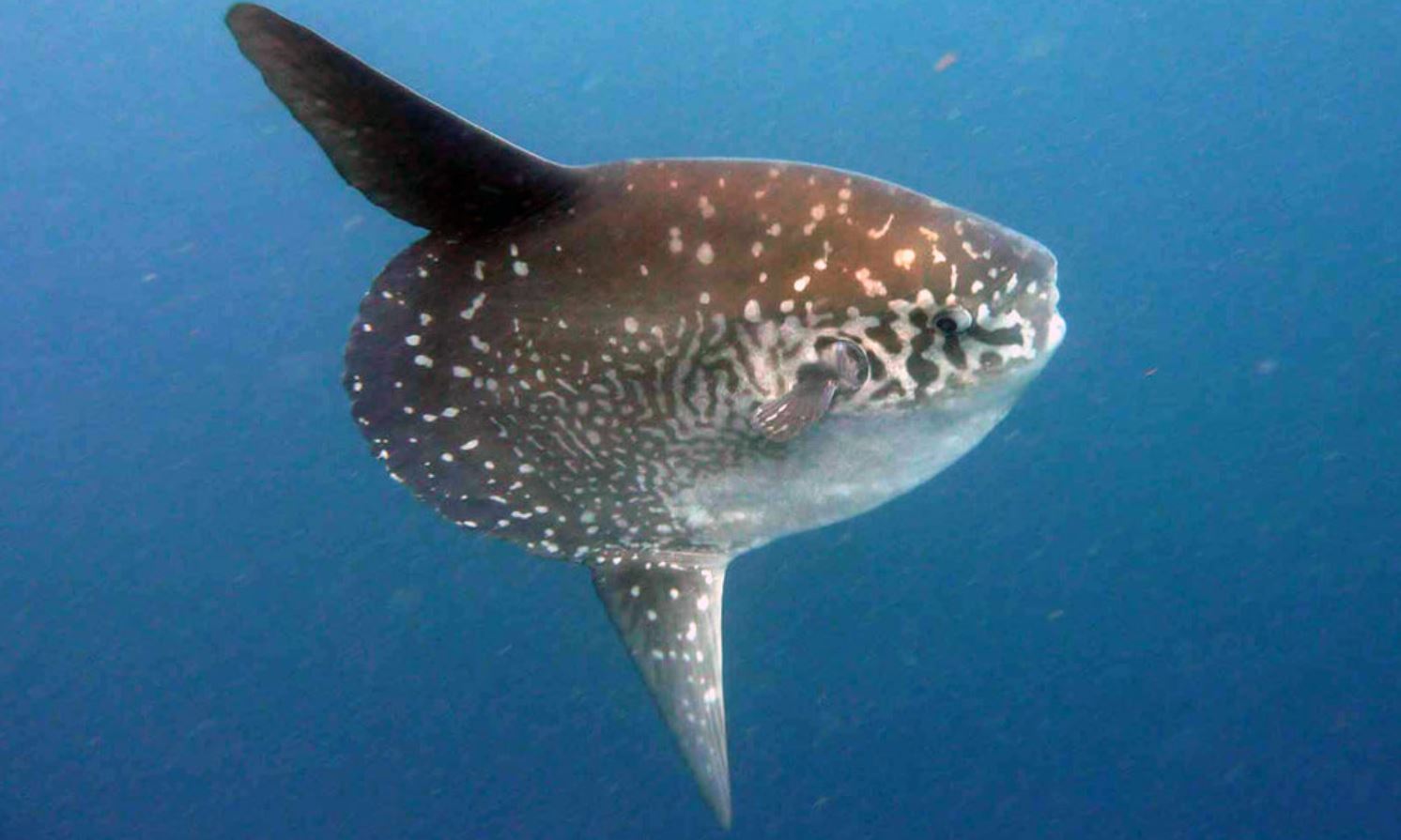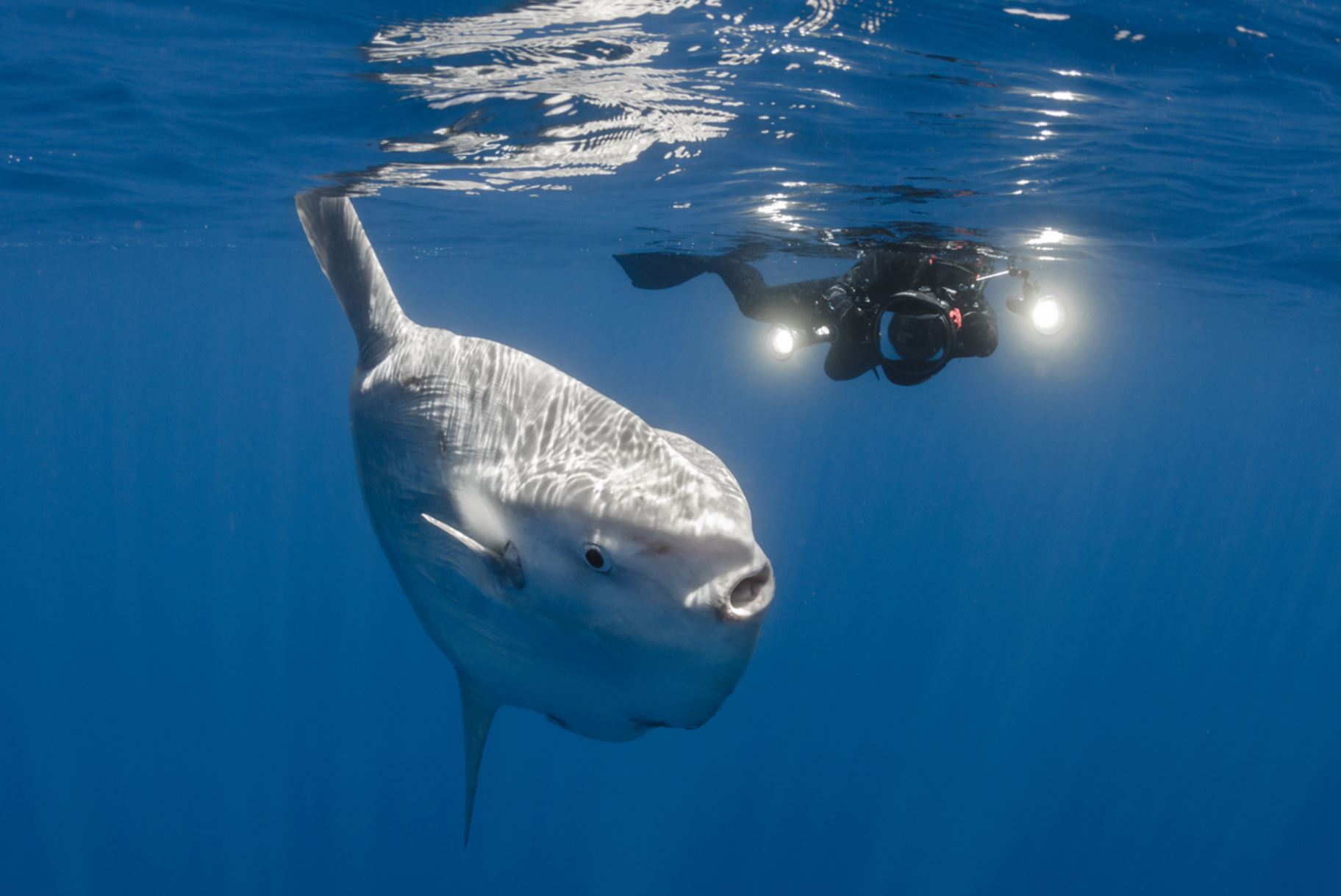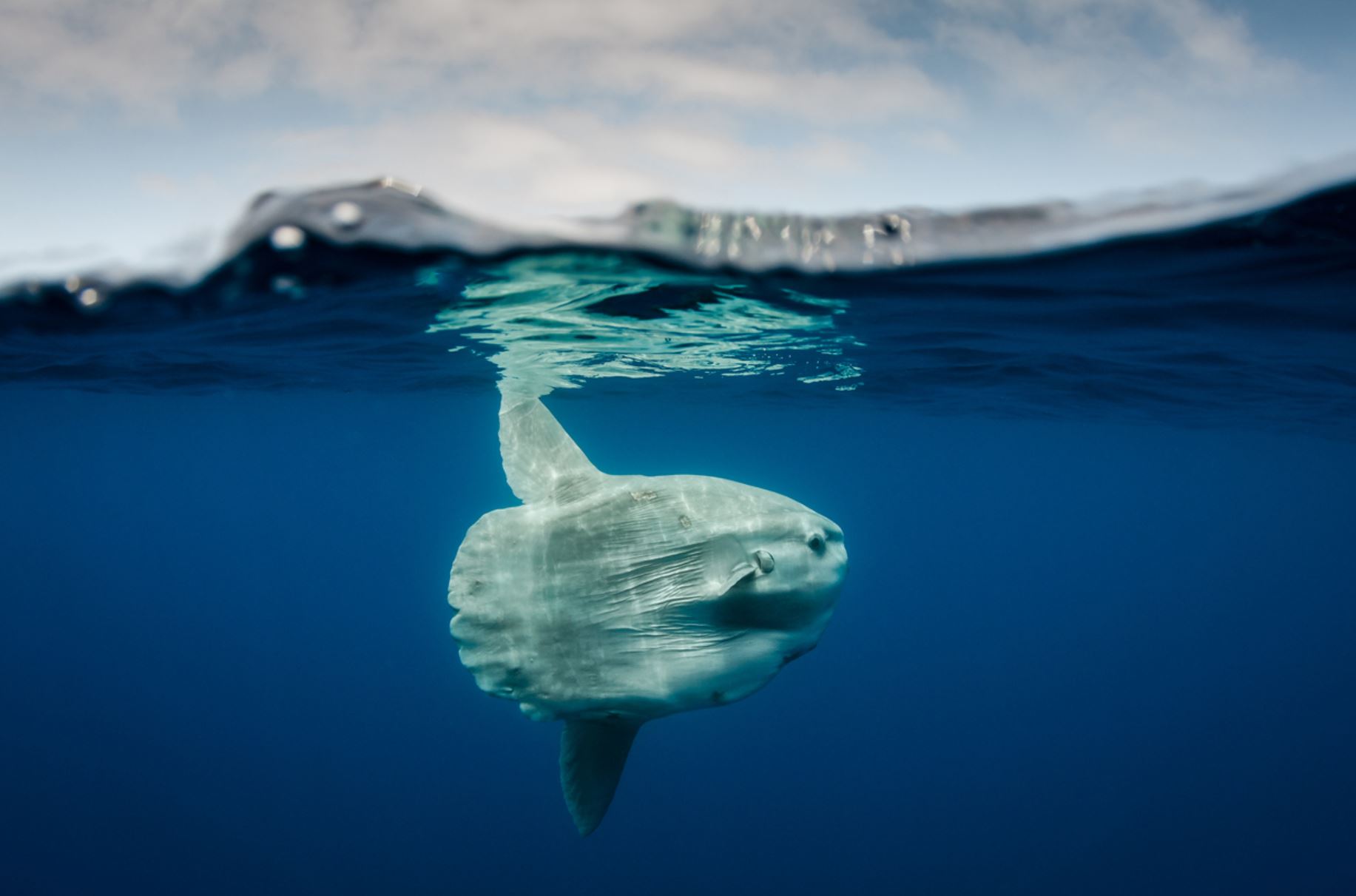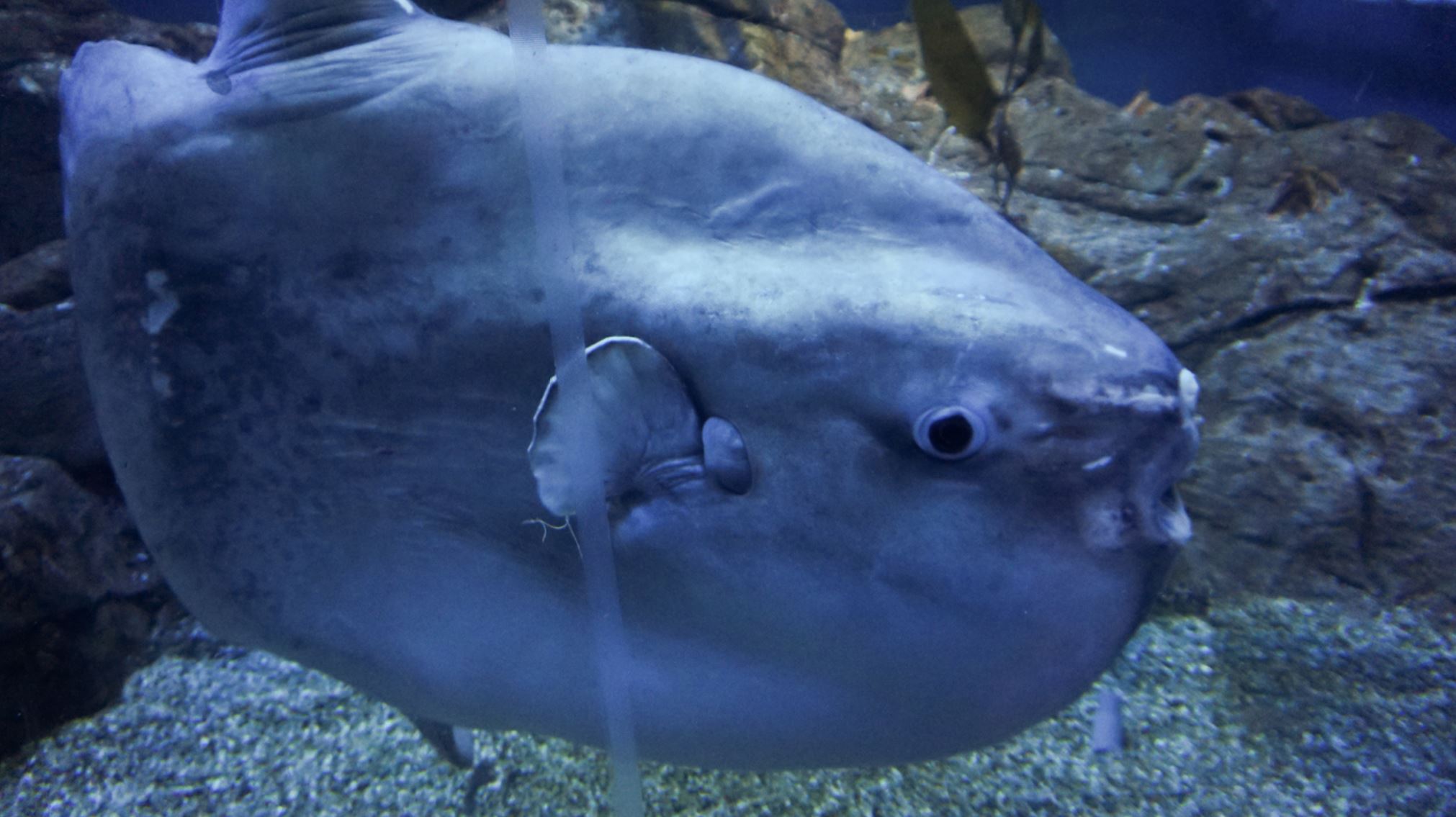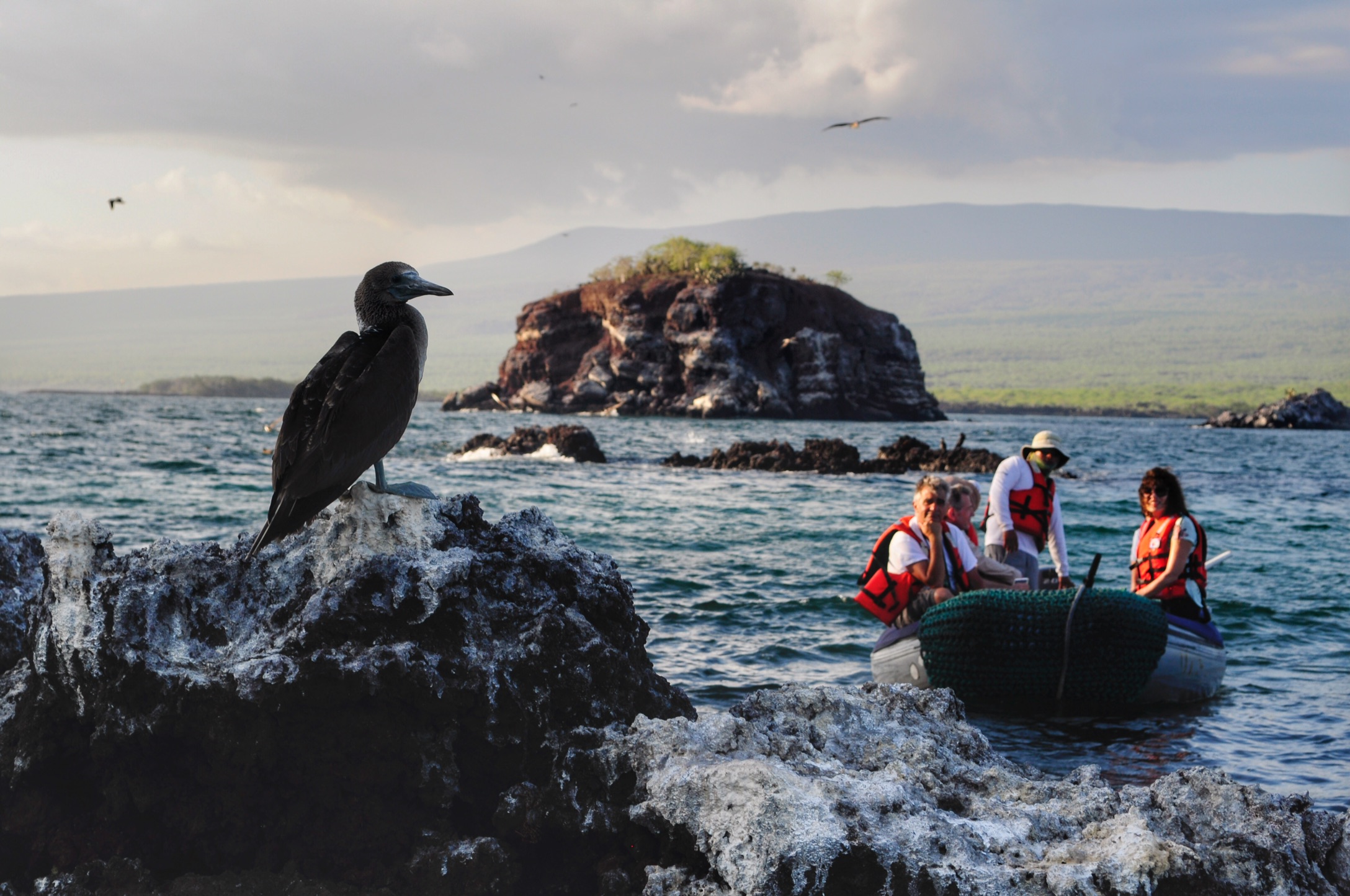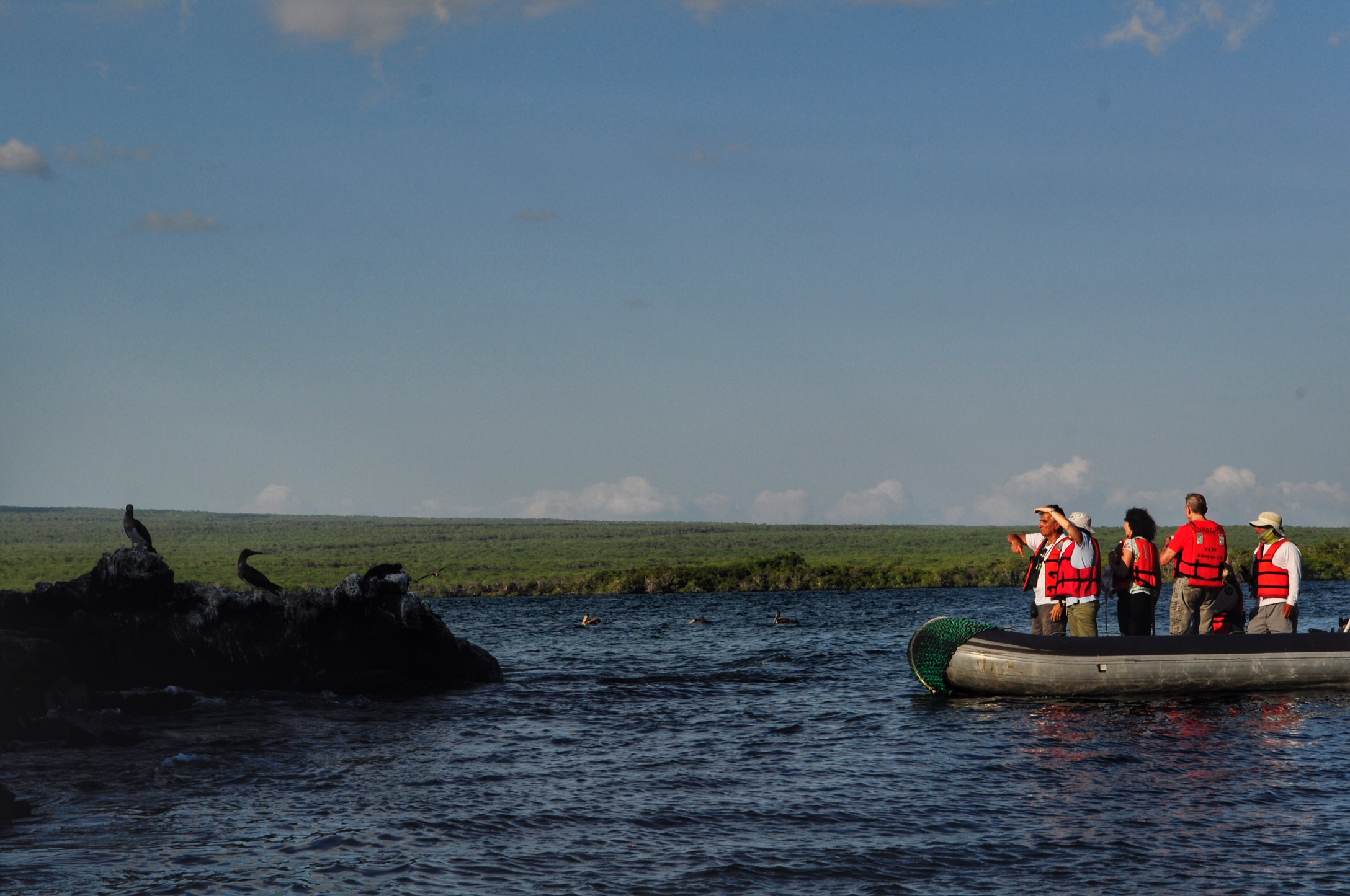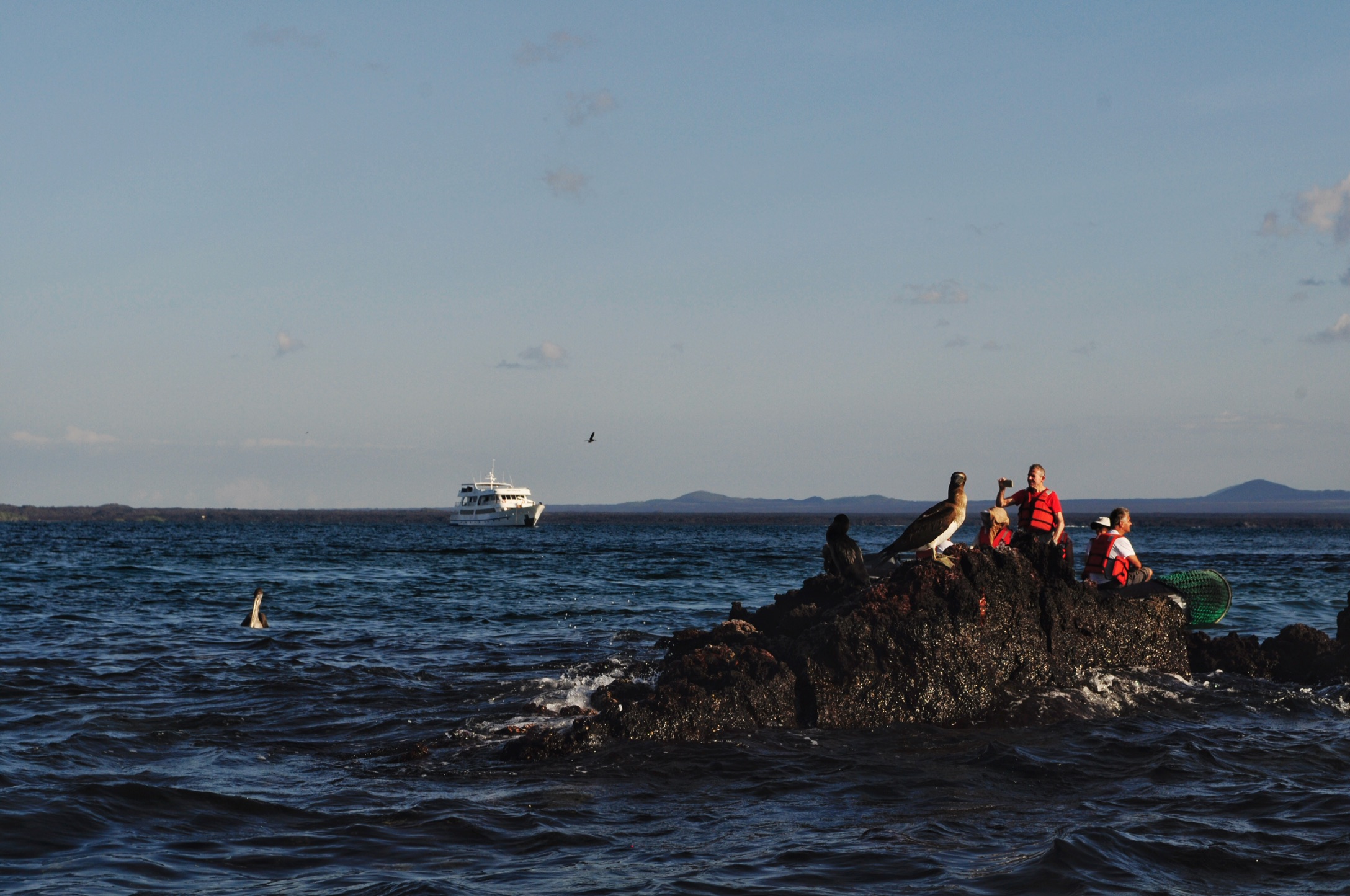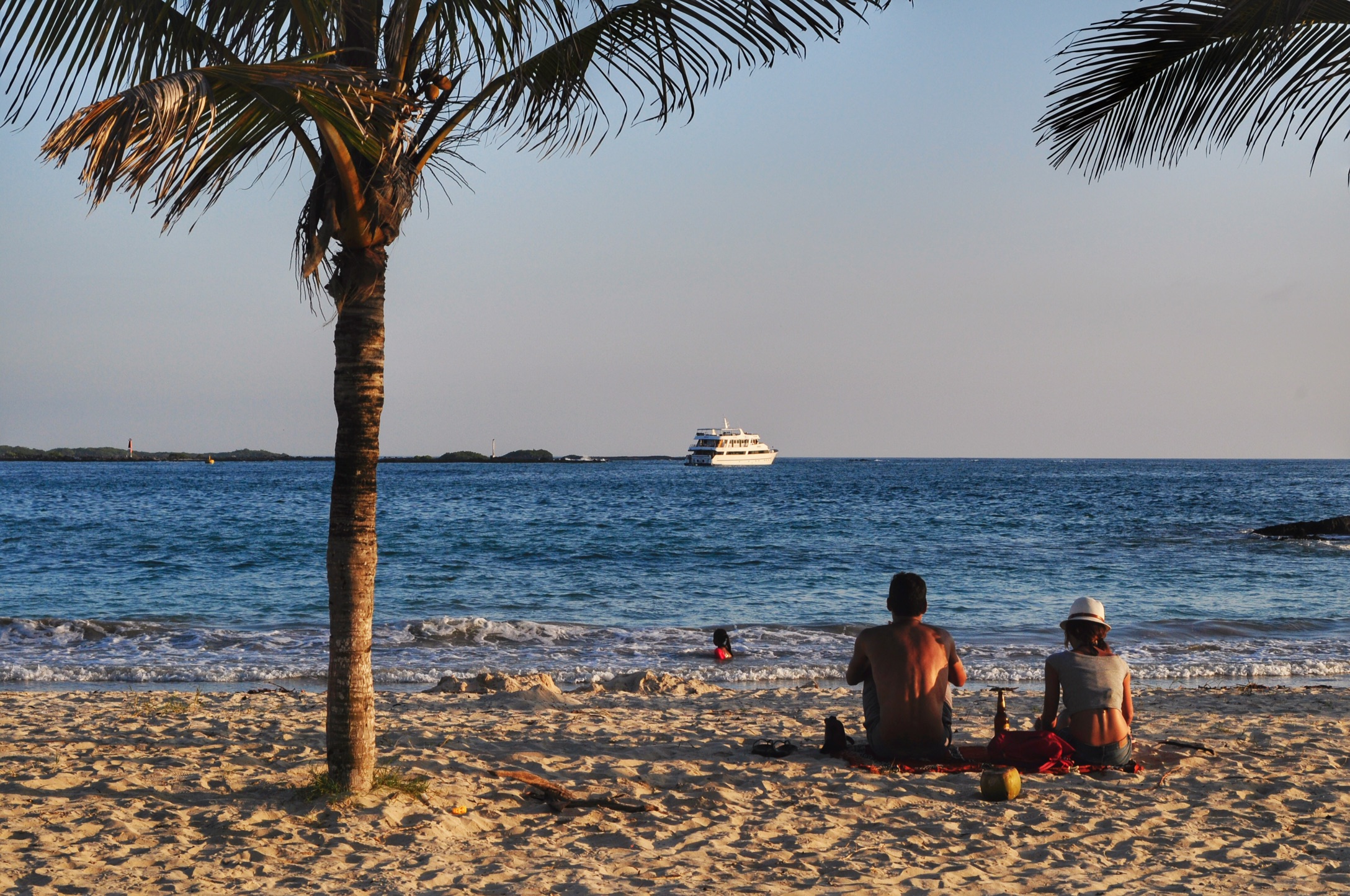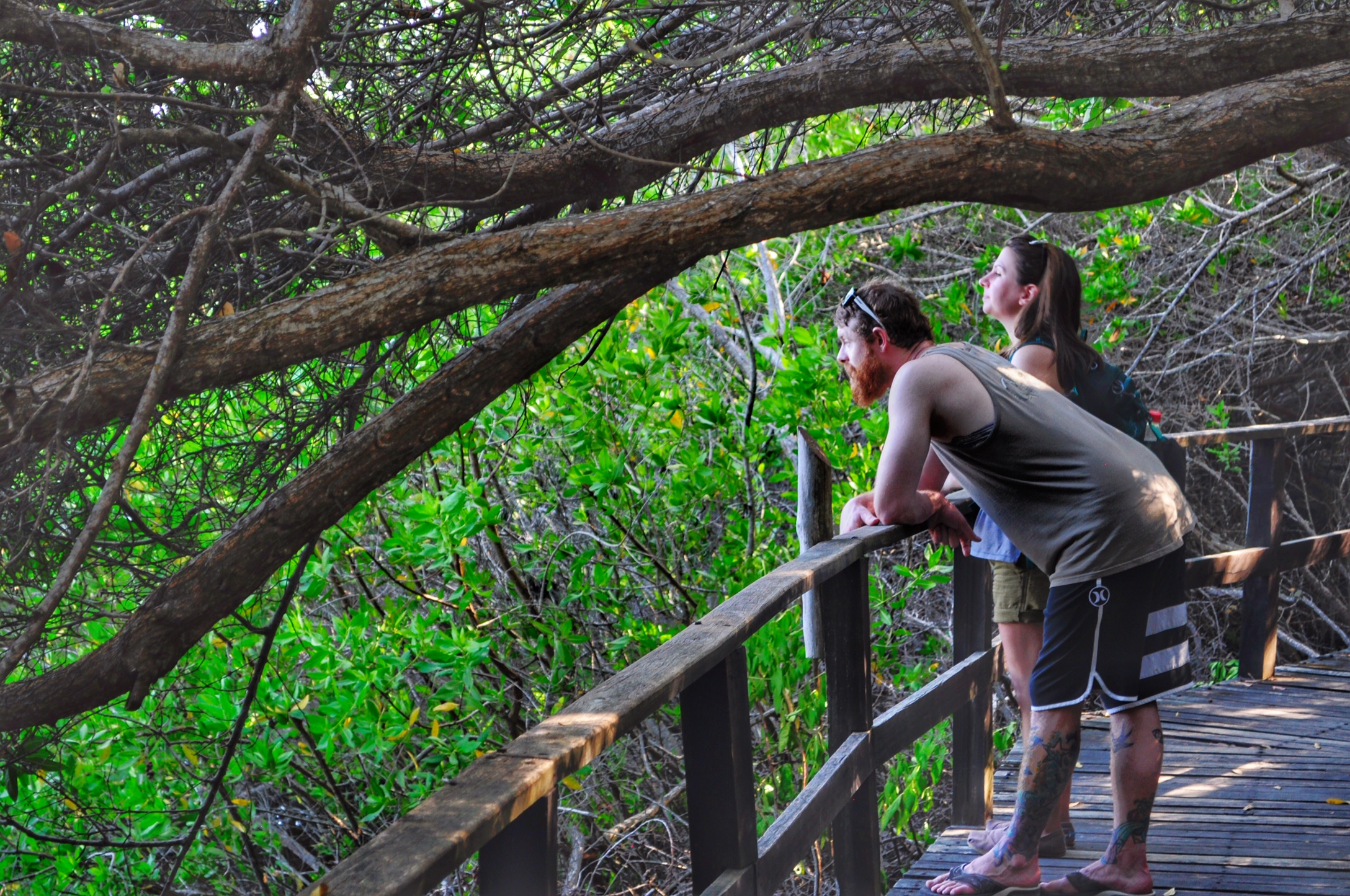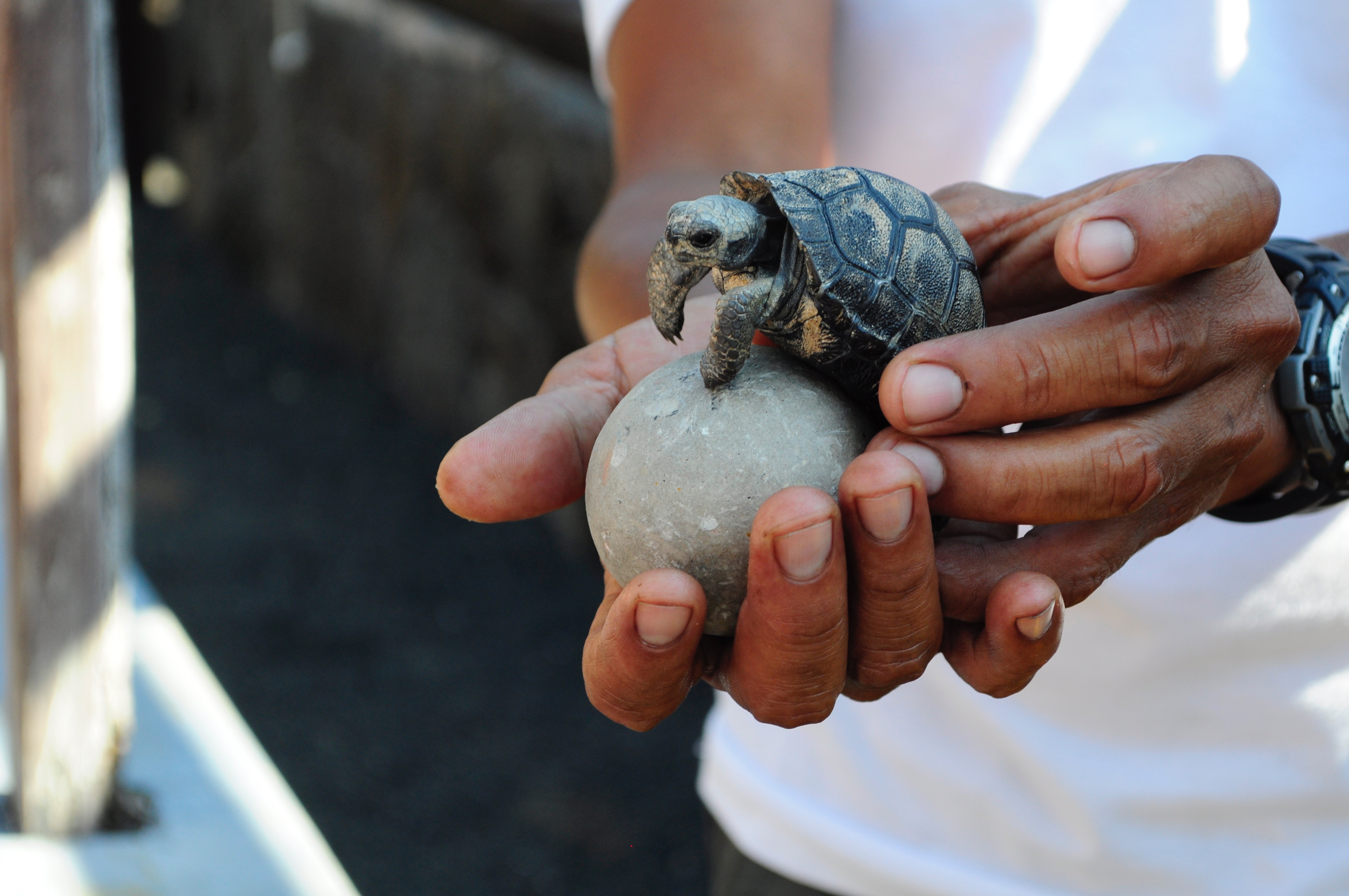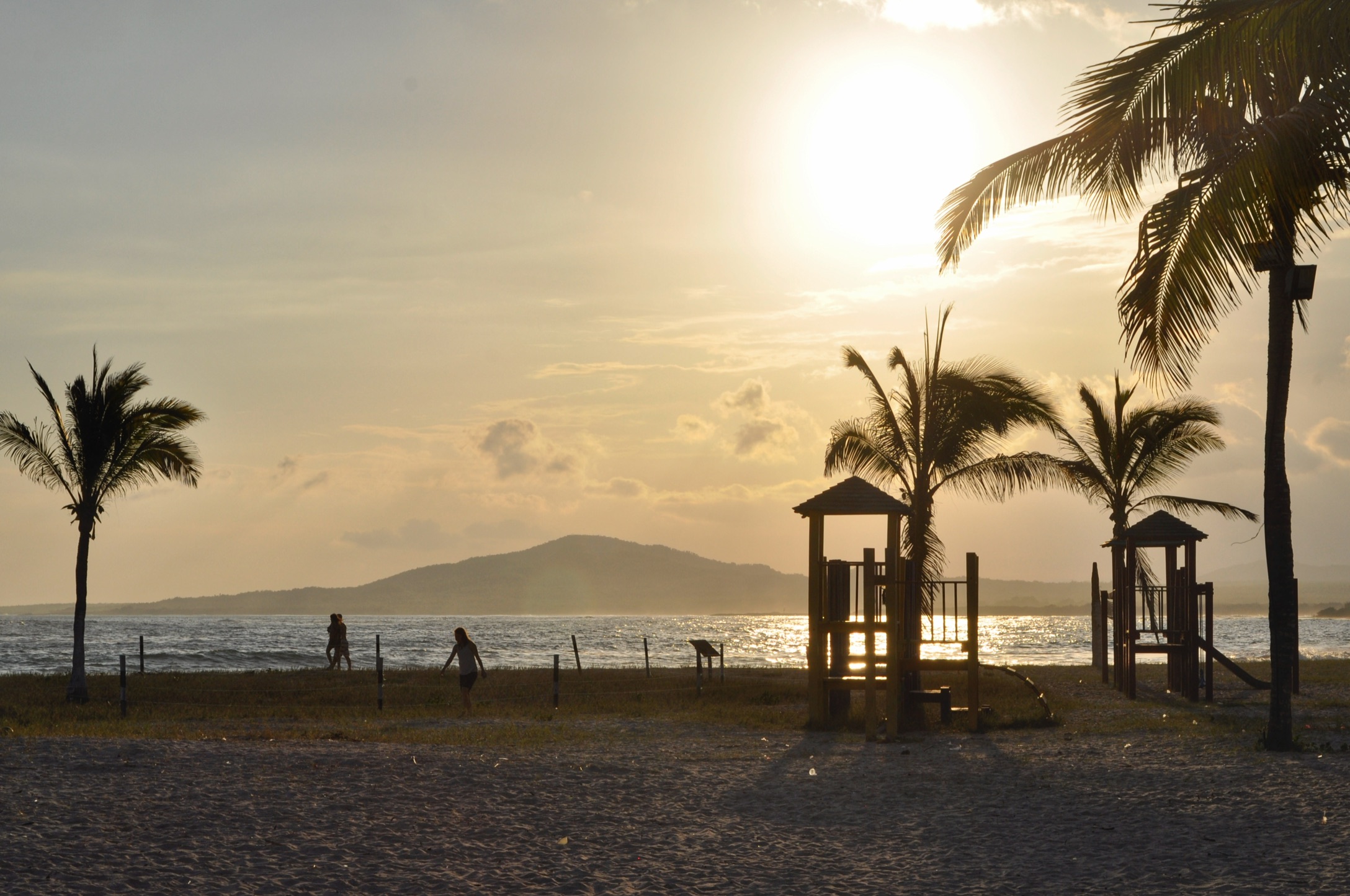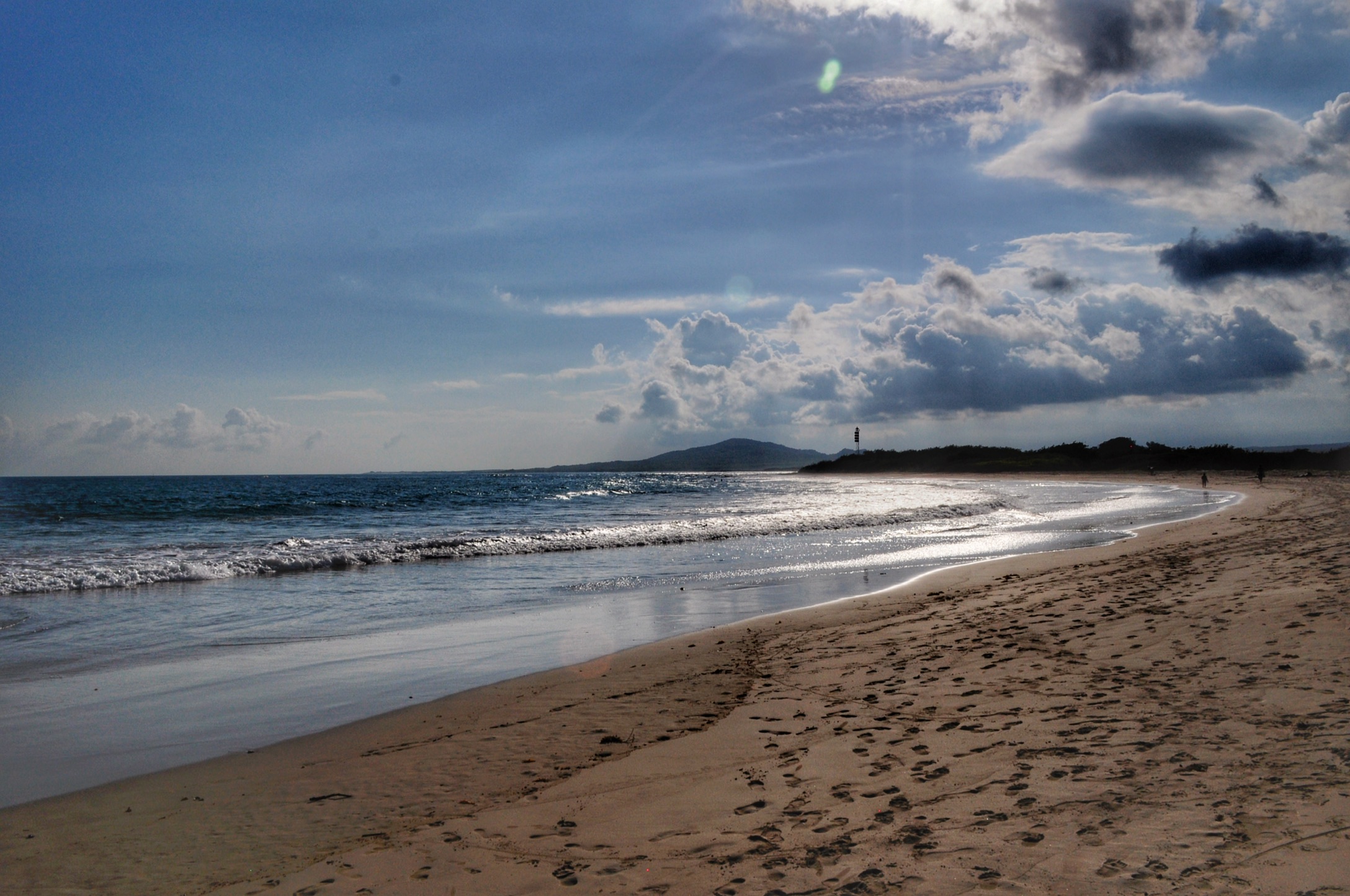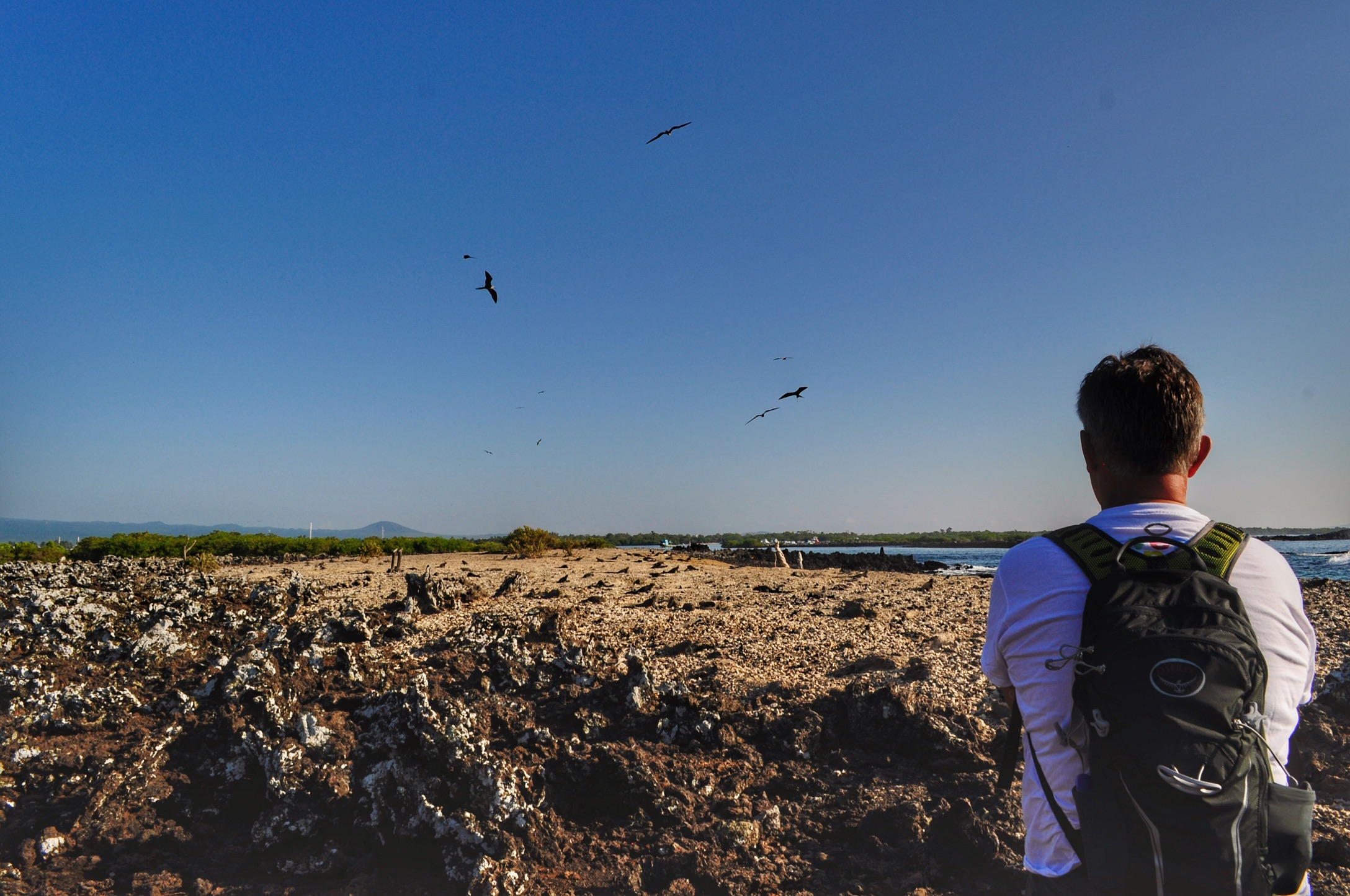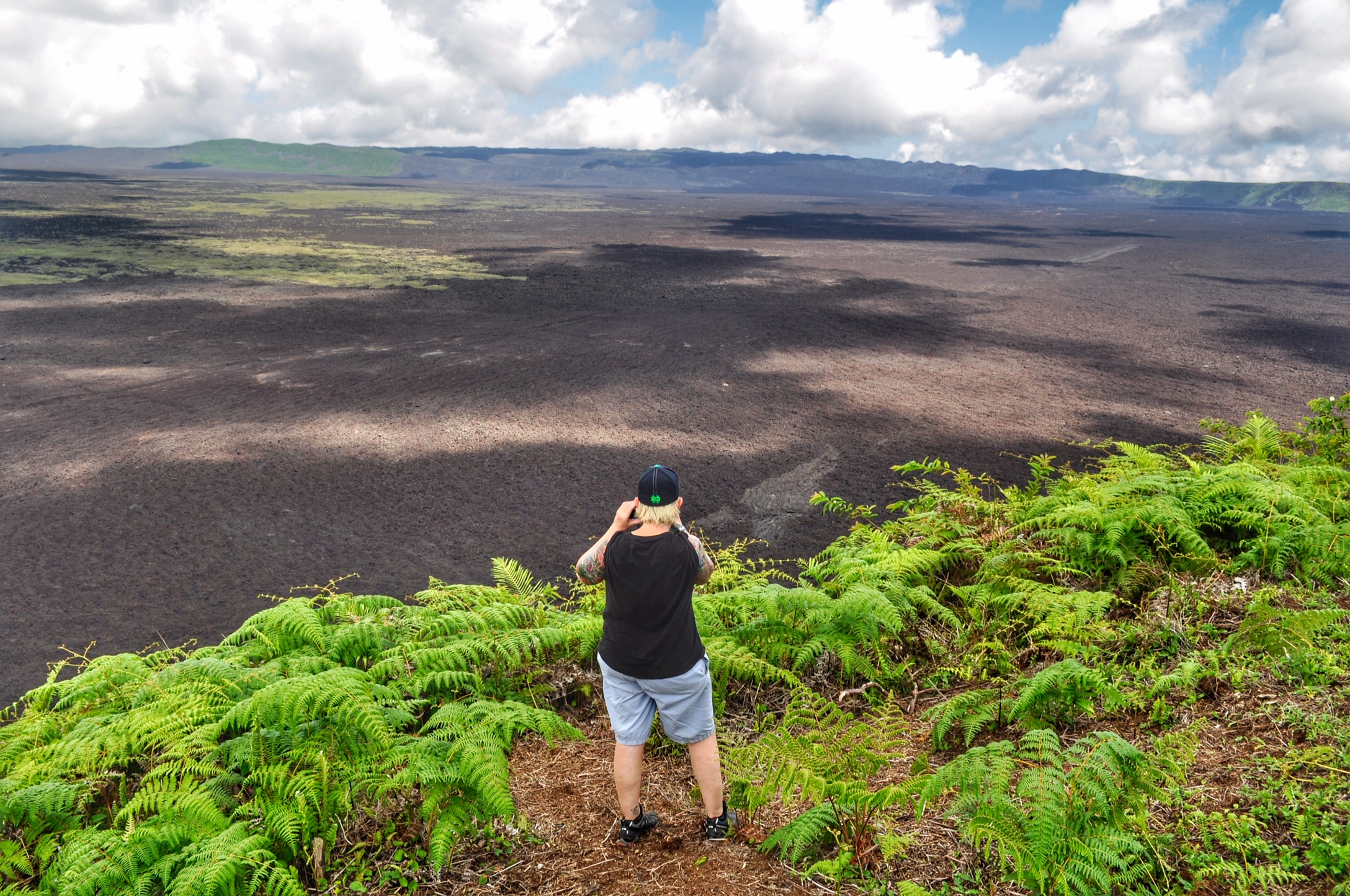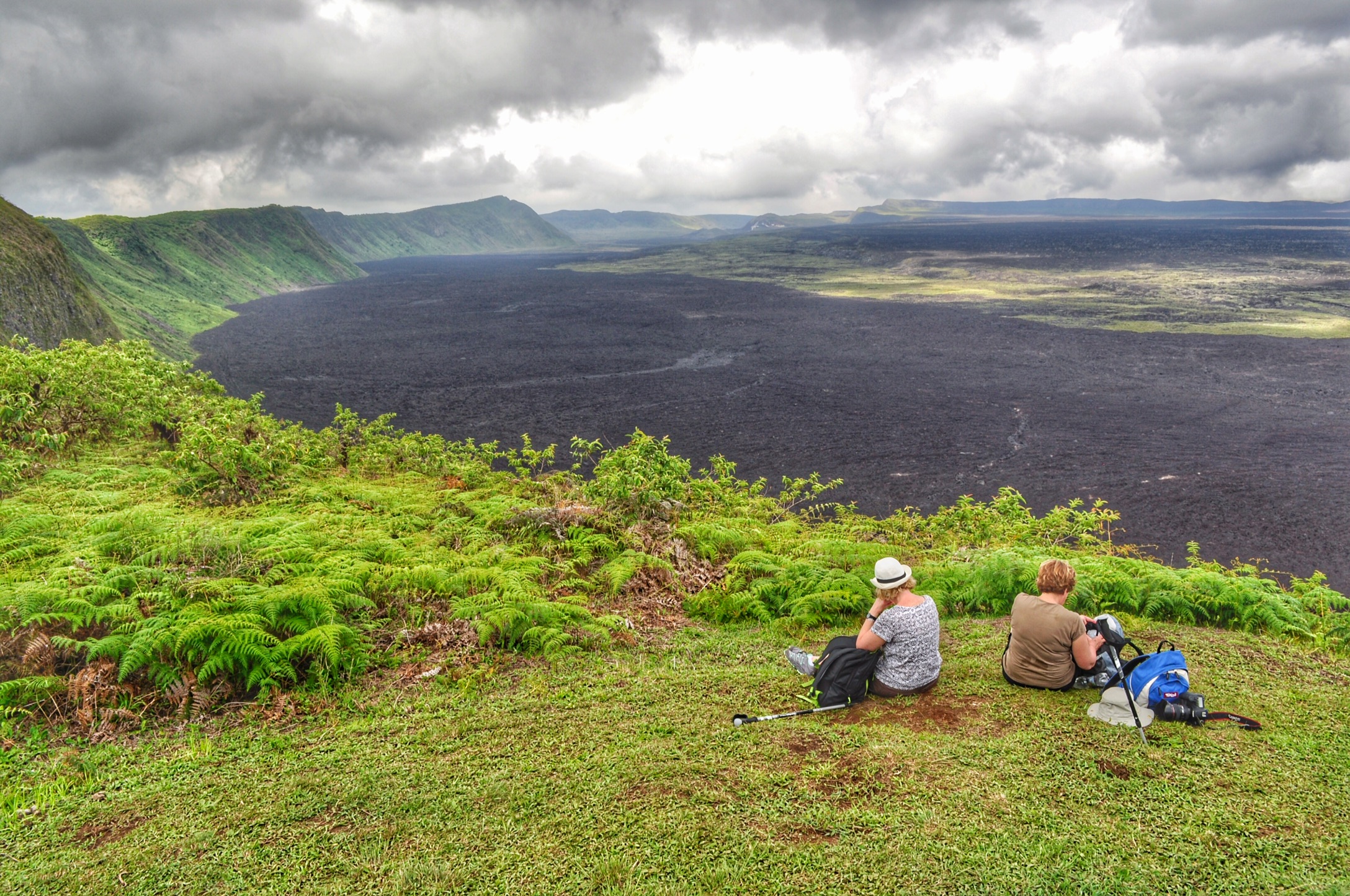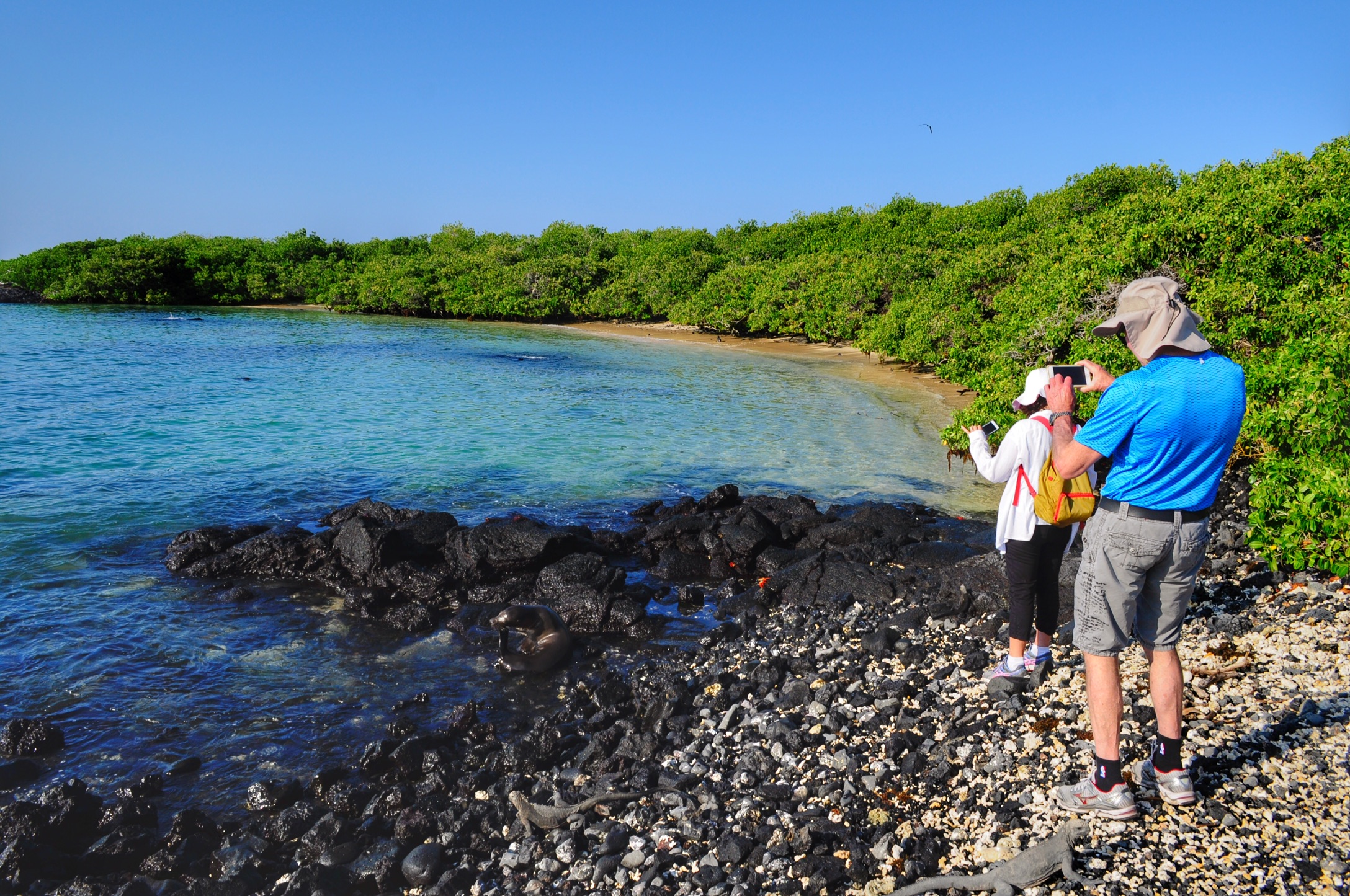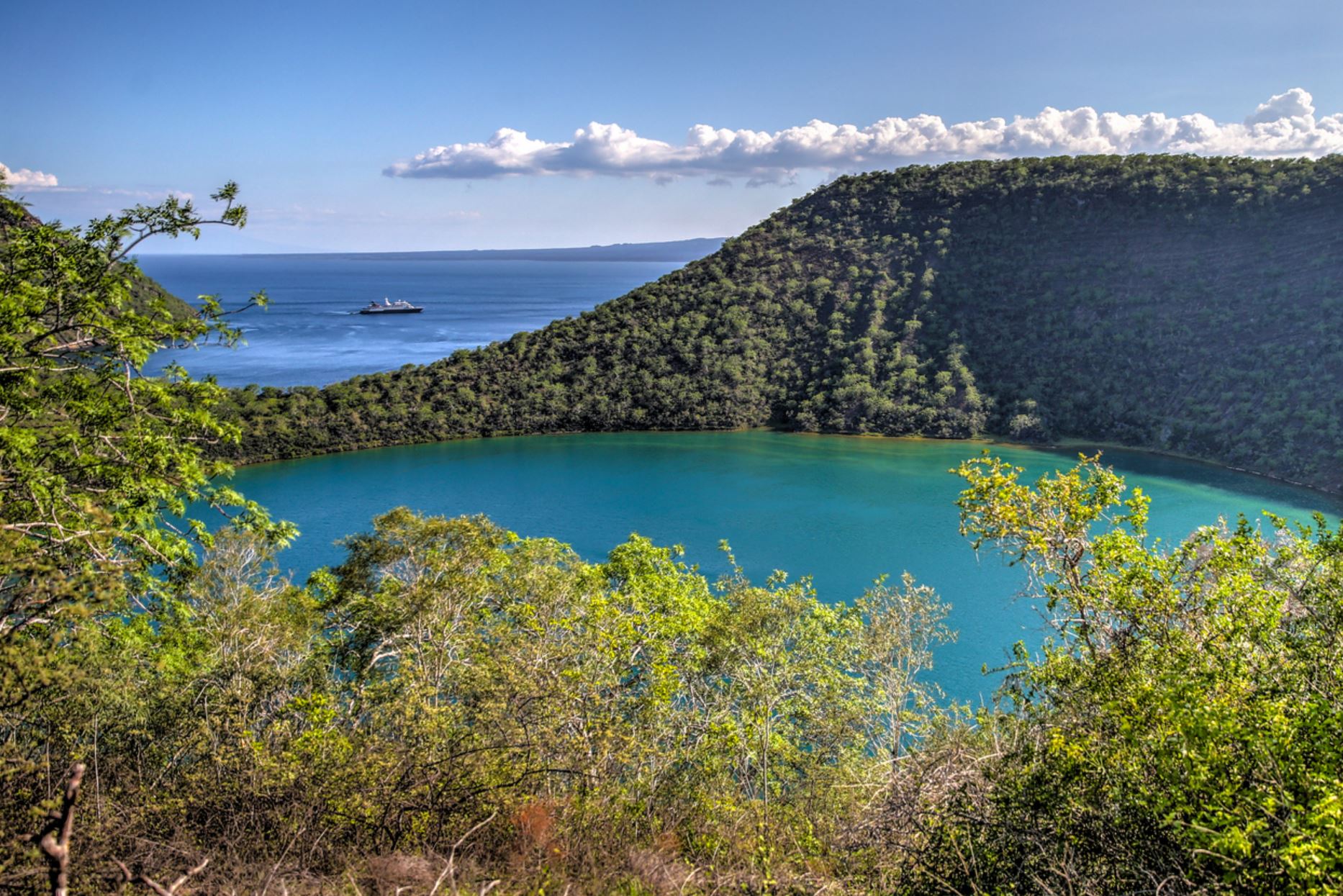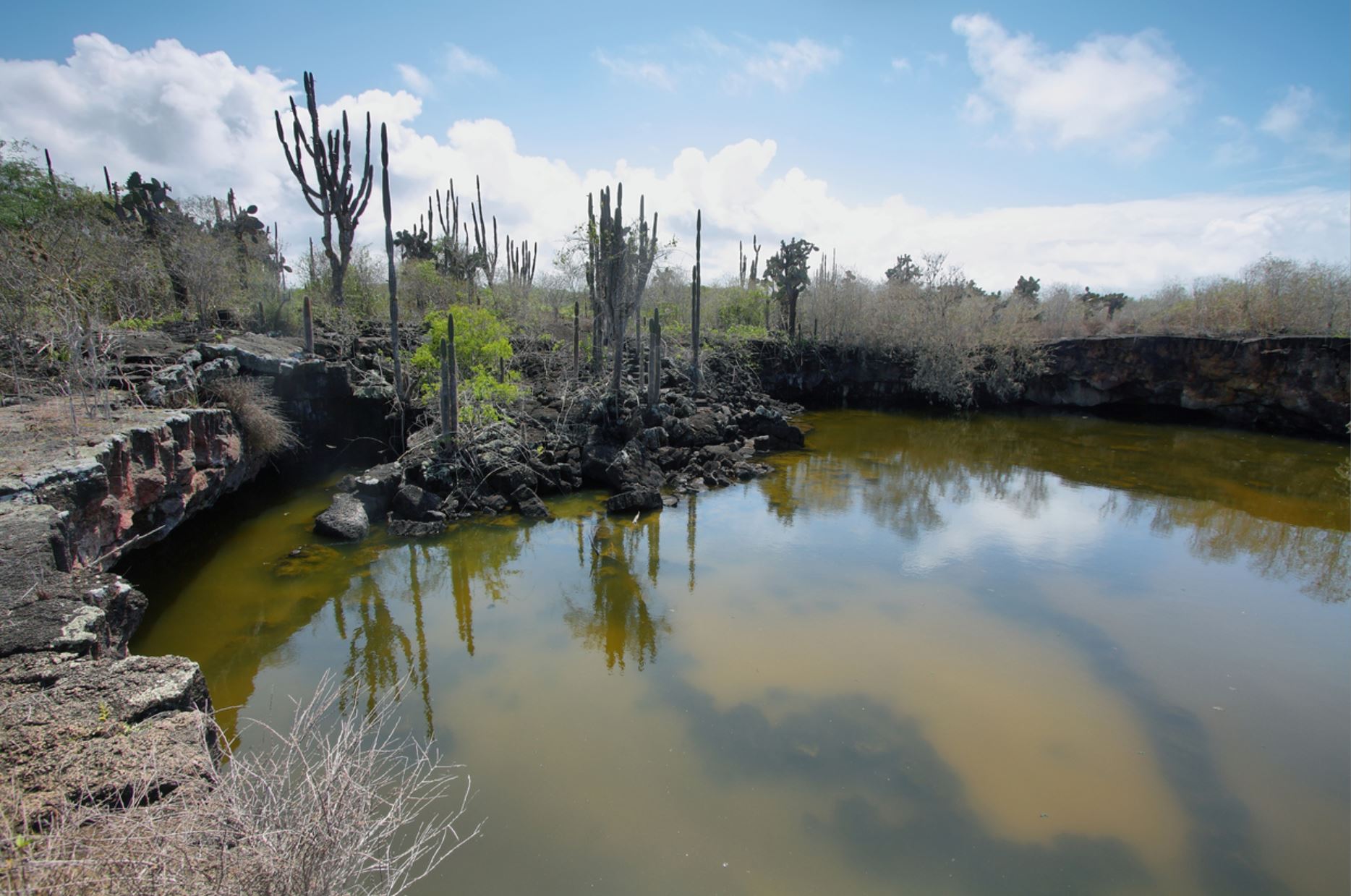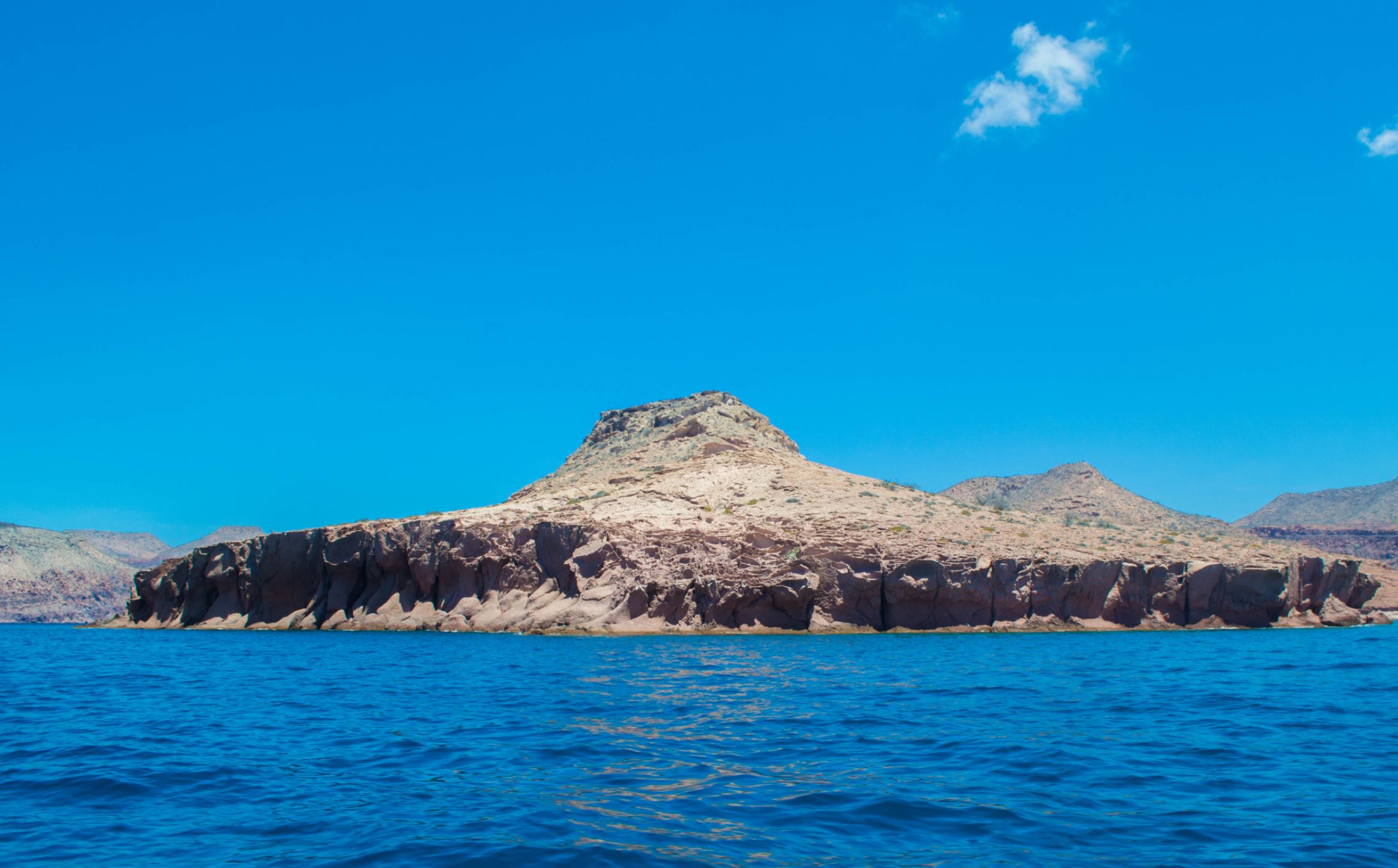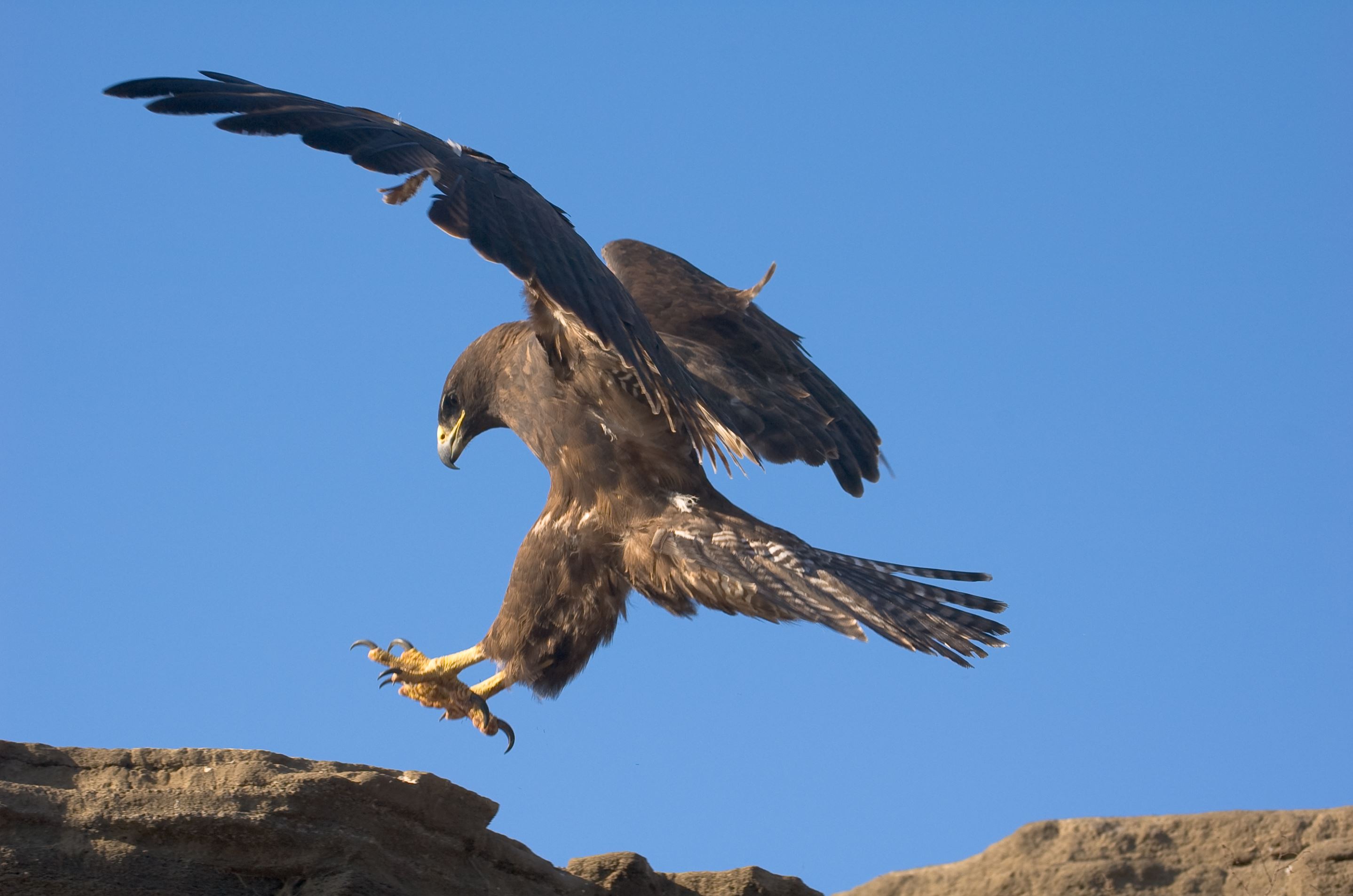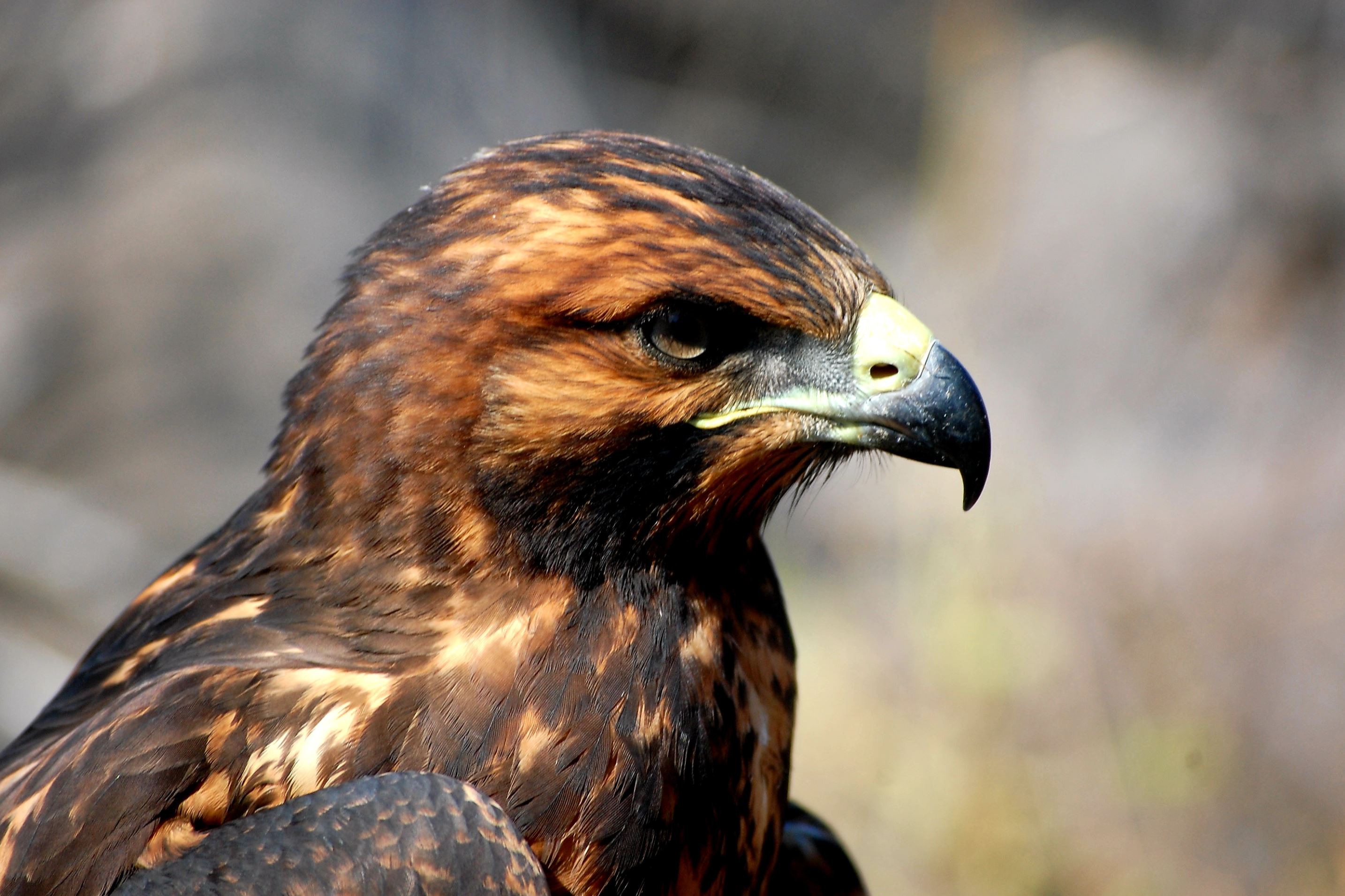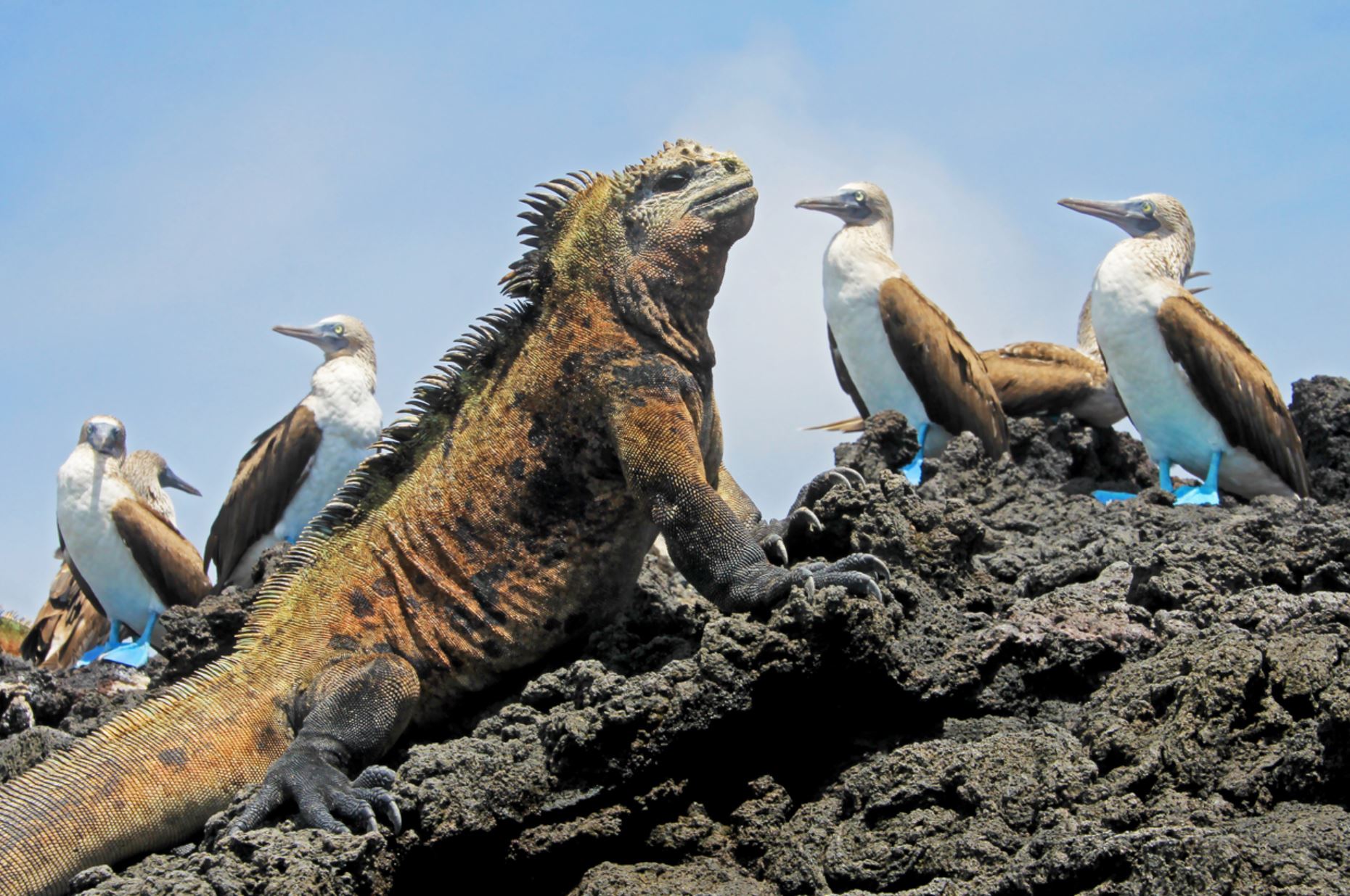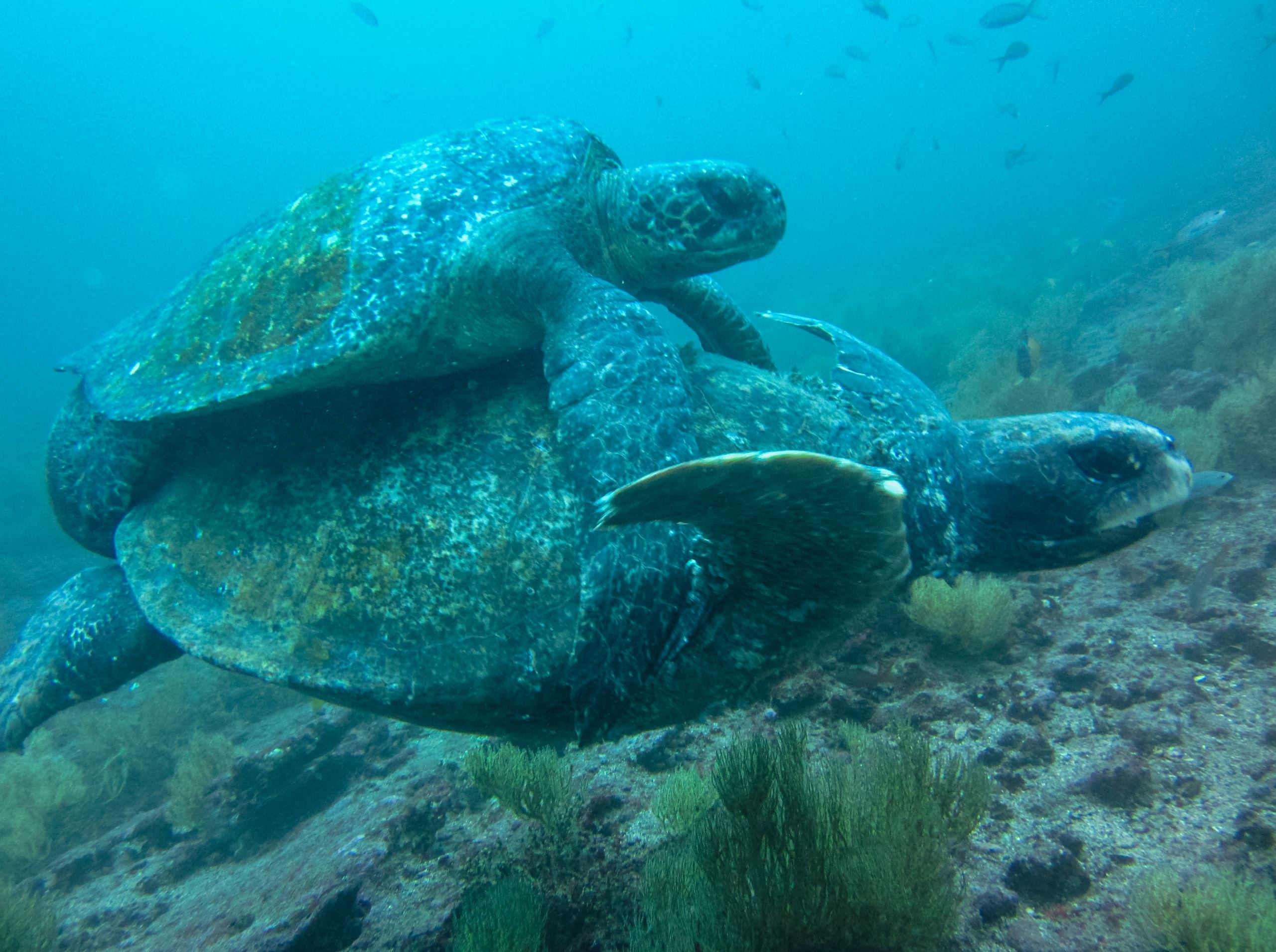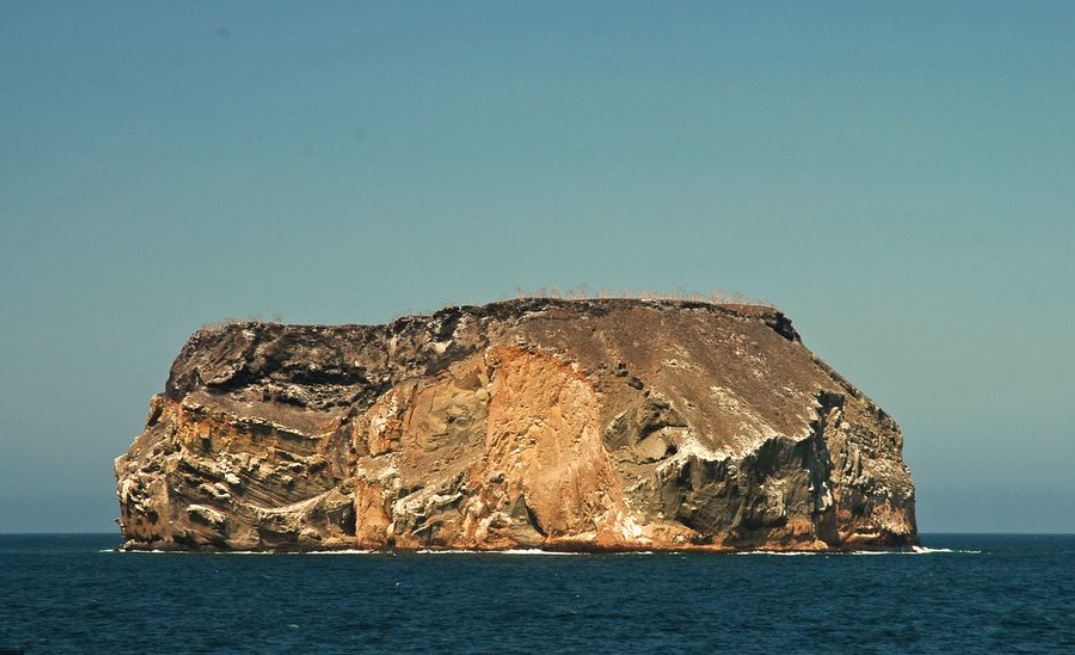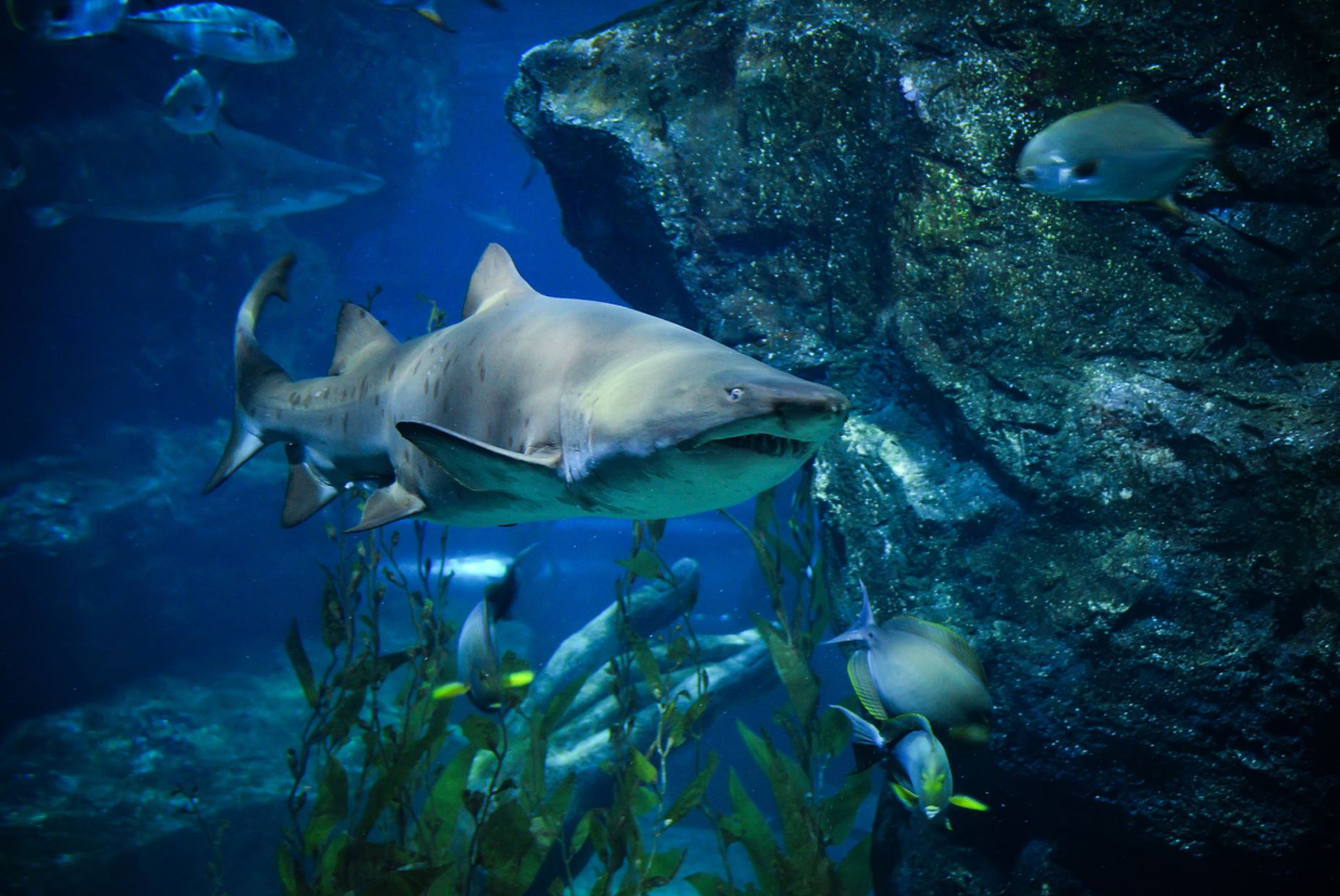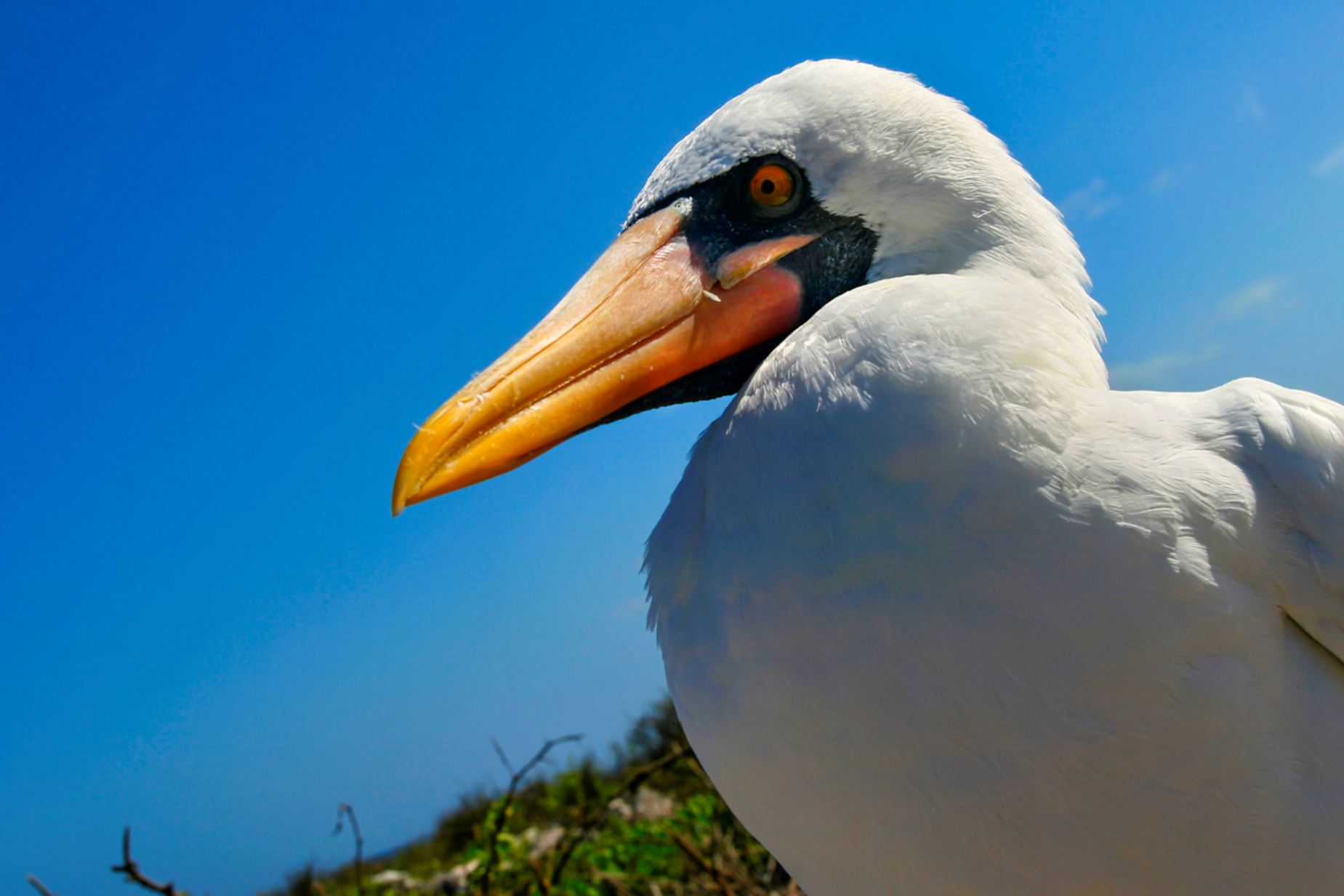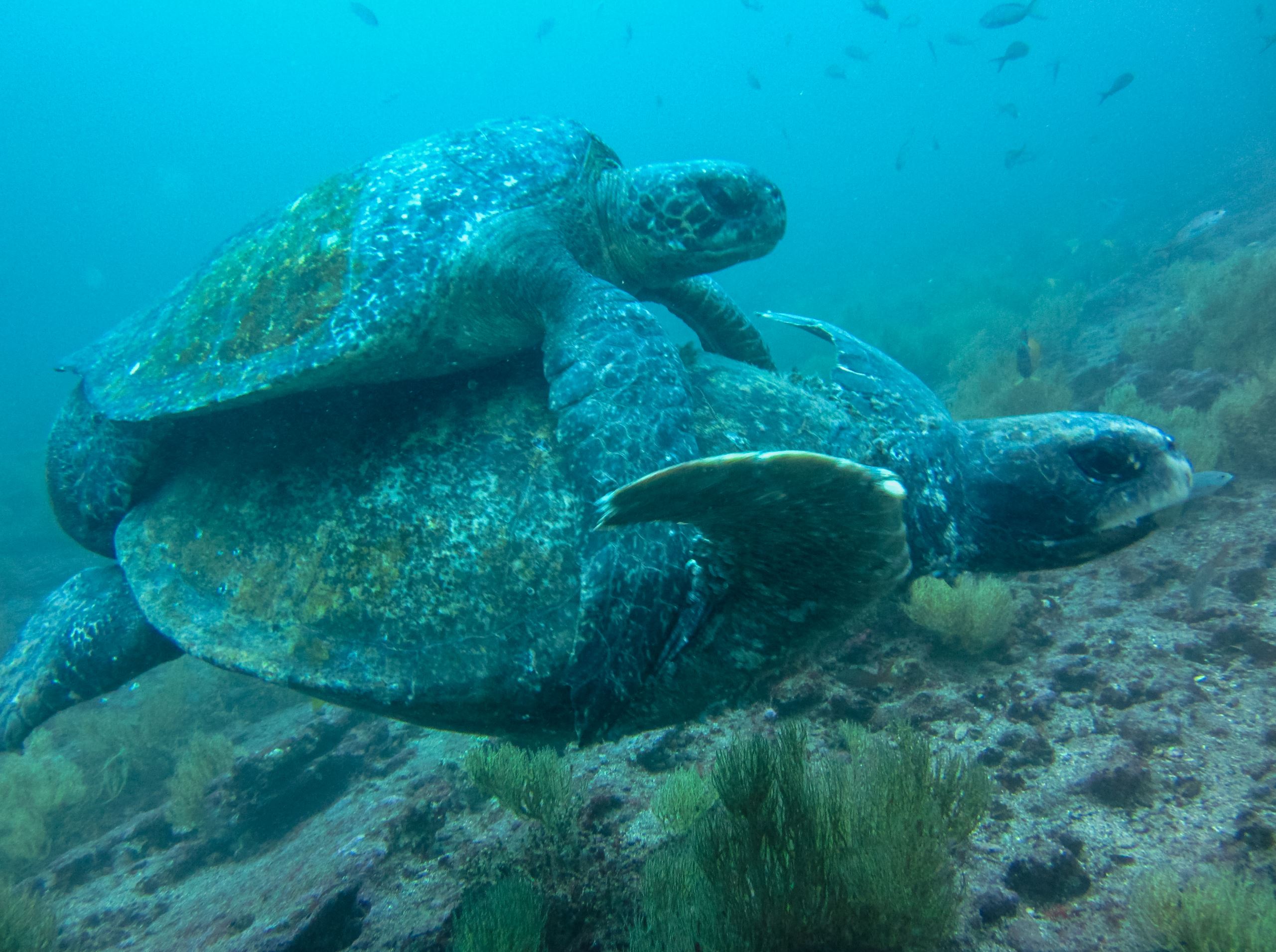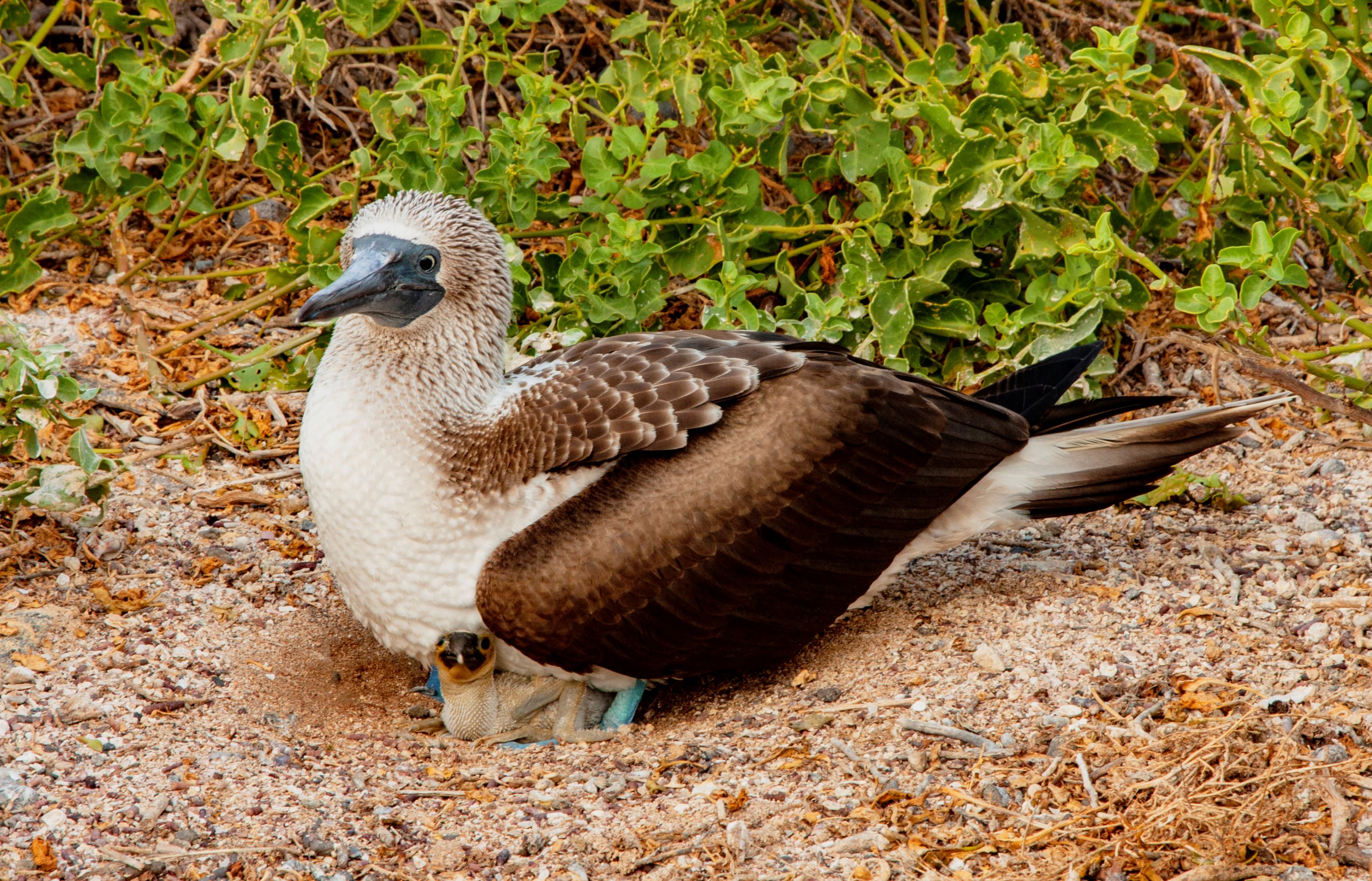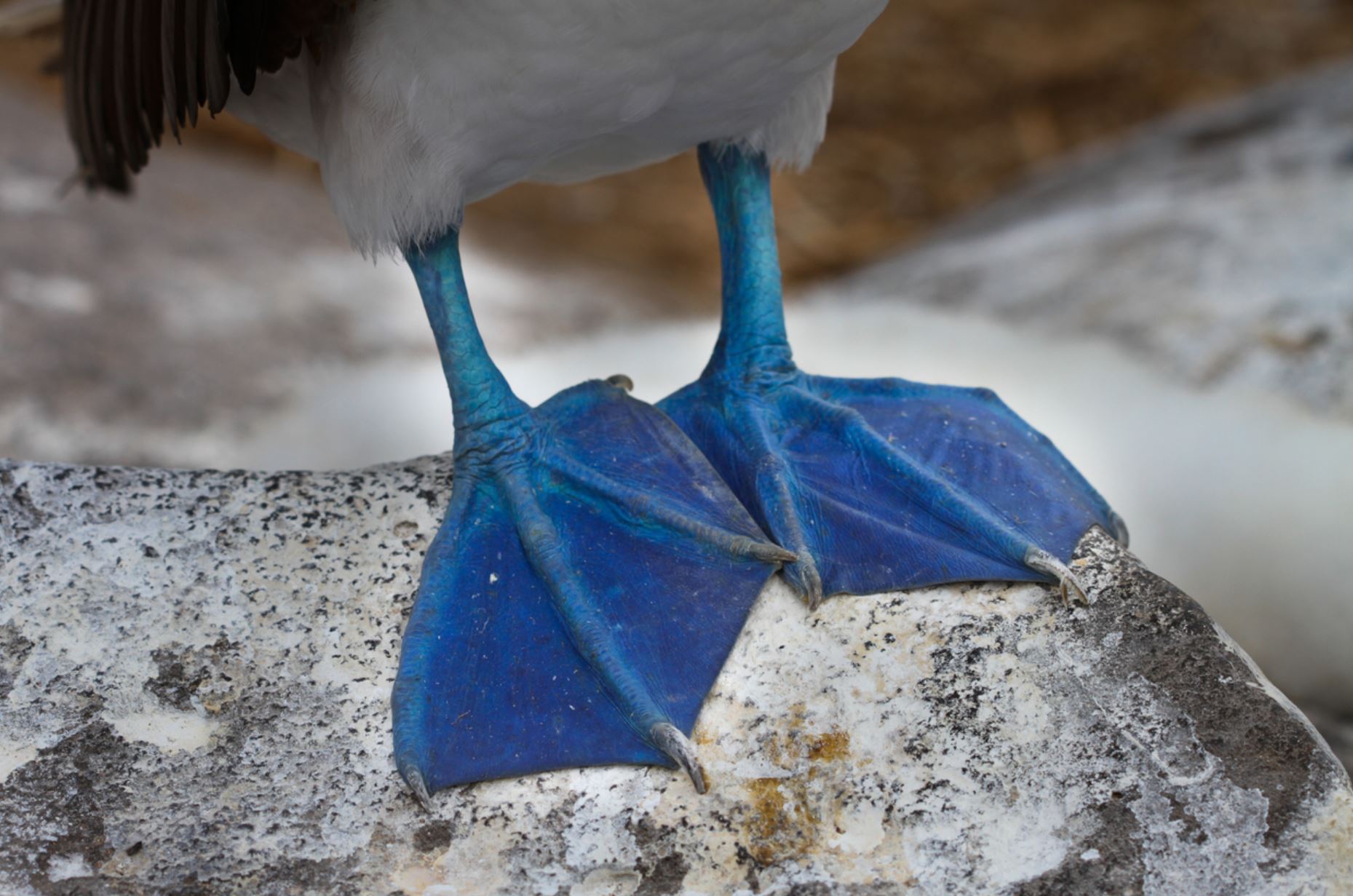Sunfish
There are two Mola species that are thought to be found in Galapagos: Mola mola, the ocean sunfish and Mola ramsayi, the southern sunfish. They look very similar and the southern sunfish was only confirmed to visit the Islands through genetic analysis in 2011. They are found throughout the globe, in tropical, sub-tropical and temperature waters as they prefer temperatures at least 10oC – anything colder may cause disorientation. This is probably why they are usually observed basking in the sun, close to the surface, which is where they gained their English name. Their Latin name, Mola, means millstone taken from their rounded body and grey colour.
Sunfish are odd looking fish. They have no real tail and propel themselves along using two towring fins, one above and one below. They have thick, tough and rough skin which is almost like sandpaper. Despite their size, they mainly feed on jellyfish, squid, crustaceans and small fish and must consume huge amounts of these to maintain their size. Their teeth are fused in a beak-like structure which allows them to crush the shells of crustaceans, and then food is further ground down by specialised teeth in their throats.
While little is known about their life histories and reproductive cycles, it is known that they produce a large clutch of eggs. This knowledge comes from a female ocean sunfish that was estimated to be carrying 300 million tiny eggs in her ovary.
- Animal Group: Marine life
- Scientific Name: Mola ramsayi
- Animal Average Size: 4 m
- Animal Average Weight: 1000 kg
Places where you may see Sunfishes in Galapagos:
Isabela, Marchena, Daphne Minor
Pictures
Islands where you can see the animal with a little luck:
Isabela
The largest island of the archipelago and is easily recognized due to its shape that resembles a seahorse. Well known for having the second biggest active crater of the world in Sierra Negra Volcano (1.490 m), is located on the west of the archipelago and has one of the richest marine ecosystems. Isabela together with Fernandina are still located over the hot spot, causing volcanic activity until today, making them the youngest islands of the archipelago. Wolf Volcano had activity just last year giving visitors the chance to see how the islands grow and turn into what we know today.
It was formed into a big island mass by six volcanoes that in the beginning were six different islands, five of which are still active. Each one of them is populated by a different specie of Tortoise that used to live in a separated island.
Home of Penguins, Flightless Cormorants, Marine and Land Iguanas and many Marine Birds, Isabela also portrays the picture of the evolving process that these species went through in all different locations of the same island. Named Albermale by the English colonizers, it offers not only diverse ecosystems but also some of the most amazing landscapes and natural sights of the archipelago.
Small human population in the south of the islands. This is one of the four populated islands; about 2200 people live in Puerto Villamil. This town is the result of almost 300 years of interesting human interactions related to military plans and prison breakouts, and today is a welcoming site to explore and encounter the settlements that can tell the story.
Punta Vicente Roca visitor site is the best place to find the famous flightless cormorant. The evolution process that this specie went through can be observed on his behavior and environment on this location, providing evidence to understand Darwin’s theory of evolution. Located on the north side, the head of the sea horse is a very important marine productive area, hit by the Cromwell Current, offers the most extraordinary marine life so it is considered one of the best diving spots of the archipelago. Whales and sharks are often seen in our visits.
Bahia Urbina visitor site is located on the central west side of the island and is the only place of the archipelago where tortoises have been born and are still there, in other words, they are a natural, untouched population. All other have suffered migrations or problems with introduced species.
Visitors sites: Albemarle Point, Arnaldo Tupiza Tortoise Breeding Center, Cape Marshall, Concha de Perla, Cowley Islet, Elizabeth Bay, Las Tintoreras, Moreno Point, Puerto Viallmil, Roca Blanca, Sierra Negra Volcano, Tagus Cove, The Wetlands, Urbina Bay, Vicente Rock Point, Wall of Tears
Marchena
The island Marchena was named after a Spanish monk, Fray Antonio Marchena. It has an area of 130 square kilometres (50 square miles) and a maximum altitude of 343 metres (1.125 feet). Galapagos hawks and sea lions inhabit this island and it is home to the Marchena Lava LIzard, an endemic species.
There are no visitor sites on this island, although it is possible to dive in the waters around Marchena. Most visitors only see it if they sail around the northern part of Isabela on the way to Genovesa Island, its nearest neighbour about 45 miles due west.
Like many of the Galapagos volcanos, Marchena has a caldera (a caldera is a volcanic feature formed by the collapse of land following a volcanic eruption. They are often confused with volcanic craters. The word ‘caldera’ comes from the Spanish language, meaning ‘cauldron’). Marchena’s caldera is roughly elliptical and measures 7 kilometres by 6 kilometres, within the range of caldera sizes of the large western volcanoes.
Marchena’s caldera is unusual, however, in that it has been almost completely filled with young lavas, some of which has spilled over and down the sides. The oldest lavas are 500,000 years old.
Another reason why Isla Marchena is so famous is that, although it is uninhabited, it was embroiled in the ‘Floreana Mystery’. Here the dead bodies of Rudolf Lorenz and the captain of the ship he was on, washed up mysteriously on the shore of the island.
Marchena is rather desolate and has no fresh water and hence has never been settled, and its flora and fauna have not been disturbed by feral animals or introduced plants. Except for diving in the waters around it, it is off-limits to tourists and is therefore seldom visited. Tortoises have apparently never inhabited Marchena.
Visitor sites
Espejo Point, Punta Mejia
Daphne Minor islet
The Daphnes include two islands, Daphne Major and Daphne Minor, just north of Santa Cruz. Both are tuff cones and are completely devoid of trees. Access to Daphne Major is restricted by the Galapagos National Park, and it may only be visited with a special permit. There is no visitor site on Daphne Minor.
Although visits to Daphne Major are strictly limited, its location between Santa Cruz, Baltra and Santiago Islands — all with large numbers of introduced species — is some cause for concern, especially given its importance as a natural laboratory for evolutionary research. Any species carried by the wind could potentially arrive on either of the Daphnes, although establishment of these species might be limited by the arid conditions.
Daphne Major is a rather large tuff cone somewhat eroded by the sea. It is a very fragile visitor site and requires a special permit. Nazca boobies, red-billed tropicbirds, and blue-footed boobies can be found nesting here. Daphne Major is the primary site of Peter and Rosemary Grant’s iconic 40-year study of evolution in Darwin’s finches that demonstrates evolution occurring over short periods of time. Nearly all of the finches on the island are banded.
Diving spots: Daphne Major and Daphne Minor
Two dive sites encircle the smaller islands of Daphne Major and Daphne Minor. At Daphne Major, divers can observe sea lions, sea turtles, Eagle Rays, various species of sharks, and other pelagic species. Daphne Minor offers something a bit more unique. There divers can observe the large quantity of benthic organisms that live on the underwater walls of the island, all of which create a multi-colored aspect to the undersea world. Sea horses can be seen around the black corals and Galapagos Sharks and sometimes rays and sea turtles are present.
Mr. Frobeen can give you precise information about the ships.
Mr. Frobeen will be happy to advise you by phone at +49 (0)7633 9399360 or via email info@frobeen.de
If you want to book, what are the payment methods?
The reservation is gratis as an option.
If you want to make an fixed booking, there is to pay a deposit of 20%.
The remaining payment is due 4 weeks before departure. In individual cases, such as diving cruises, other rules apply. Information on request.
- Your payments are insured against bankruptcy!

